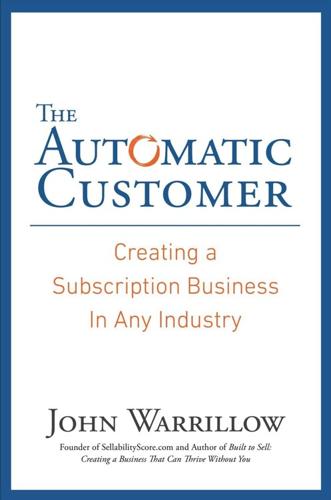
The Automatic Customer: Creating a Subscription Business in Any Industry
by
John Warrillow
Published 5 Feb 2015
PART TWO The Nine Subscription Business Models Part Two of this book is divided into nine small chapters, each of which describes one of the nine basic subscription business models. My goal is to show that savvy companies in every industry—from restaurateurs to home builders to dance studio owners and psychologists—are creating recurring revenue streams by leveraging the subscription business model. Not every example may seem immediately relevant to your industry. Some of the most interesting and lucrative subscription companies borrow ideas from a variety of industries or business models. As you read, I encourage you to ask the questions “How could this model apply to my industry?”
…
My hope, however, is that by seeing the range of subscription models that are out there, you’ll be able to jot down a few possibilities for launching your own subscription business or complementing your existing business with some recurring revenue. I hope you agree that while cloud-based software companies and media titans have pioneered the subscription business, it is a model that you too can leverage, whether you own a law practice, a coffee shop, or a day-care center. Next, let’s dig into the hard work of actually building a subscription business. PART THREE Building Your Subscription Business Many traditional businesses become successful based on the sheer force of the owner’s personality.
…
We’ll look at the psychology of selling your subscription and how to overcome something I call “subscription fatigue.” Then we’ll turn to financing the growth of your subscription business and explore whether you want to raise venture-capital funding, as WhatsApp and Dollar Shave Club did, or self-fund your growth, like FreshBooks and Mosquito Squad. Part Three ends with a discussion on scaling your subscription business. Let’s get started. PART ONE Subscribers Are Better than Customers Why are Amazon, Apple, and many of the most promising Silicon Valley start-ups leveraging a subscription business model? In Part One we’ll look at how automatic customers make your company more valuable . . . and a whole lot more enjoyable to run.
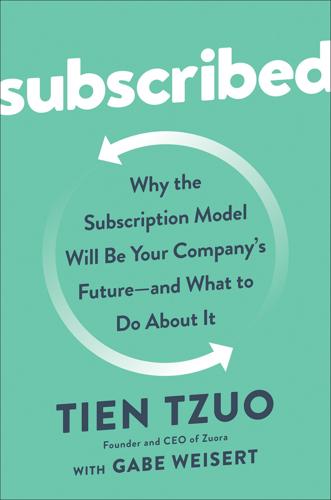
Subscribed: Why the Subscription Model Will Be Your Company's Future - and What to Do About It
by
Tien Tzuo
and
Gabe Weisert
Published 4 Jun 2018
These days, more and more CIOs are staring down the ridiculously huge upgrade bills for their on-premise ERP systems, and they’re wondering why they should even bother when there are so many cheaper, smarter SaaS alternatives on the market. These days, everyone understands that subscriptions are the dominant business model for the technology industry. Gartner predicts that by 2020, more than 80 percent of software providers will have shifted to subscription-based business models. As a recent Deloitte paper notes, the big technology firms simply can’t afford not to offer subscription models: “As more and more customers demand more flexible payment models, the continued viability of many companies, and even entire industries, is being threatened.
…
See Subscription Economy Index (SEI) Selfridge, Harry Gordon, 18 self-service sales model, 163–64 service-level agreements, 97–98, 106 showrooming scare, 32 Siebel, 4 siloed organizations, 131–32 Sinocism (newsletter), 66 Slack, 198 Slade, Jon, 73–74 SlimPay, 63 Sloat, Tyler, 175–76, 184, 187 Smith, Will, 46 SNCF, 62–63 software as a service (SaaS) model, 5–6, 80–93 Adobe’s move to digital subscription model, 80–82, 86–89, 96 continuous innovation and, 133–36 fish model and, 85–86 PTC’s move to digital subscription model, 90–93 shift from capex to opex, 90 SolarCity, 119 Spotify, 2, 13–14, 18–19, 39, 69 Springsteen, Bruce, 38 Stance, 28 Staples, 22 Starbucks, 27–28, 140–42 Star Wars (film), 38 static products, applying service-oriented mindset to, 30–32 Stitch Fix, 28, 145 Stratechery (newsletter), 66 strategic acquisitions, 170–71 subscriber IDs, 26–27, 140–42, 146 subscription, defined, 20 Subscription Economy, 1 airline industry and, 59–61 automobile industry and, 51–59 construction industry and, 98–100 customer-centric organizational mindset, shift to, 19–21 education and, 116–17 finance industry and, 120–21 gaming industry and, 126–27 government and, 116 health care industry and, 115 insurance industry and, 117–18 Internet of Things (IOT) and, 97–113, 101–13 media industry and, 37–50 newspaper industry and, 65–79 pet care industry and, 118–19 railway industry and, 61–63 real estate industry and, 120 retail industry and, 22–36 subscription, defined, 20 subscription model (See subscription model) technology industry and, 80–96 utilities and, 119 Subscription Economy Index (SEI), 6, 114, 209–28 average revenue per account (ARPA) growth, 211–13 churn rates, 218–20 EMEA growth, 220–21 methodology for, 227–28 net account growth, 211–13 North American growth, 220–21 SEI growth and GDP growth, correlation between, 210–11 subscription business sales versus S&P 500 sales and US retail sales, 210 subscription revenue growth by business model, 213–15 subscription revenue growth by industry, 215–16 subscription revenue growth by revenue band, 217–18 usage-based billing, 221–27 Subscription Marketing Strategies for Nurturing Customers in a World of Churn (Janzer), 130 subscription model, 1–8, 20–21 business goals and, 1 CIO/IT group and, 129–30, 189–99 continuous innovation and, 133–42 finance and, 129, 174–88 impact on company of shift to, 126–31 marketing and, 130–31, 143–55 production team and, 128–29 sales and, 130–31, 156–73 subscription revenue growth by business model, 213–15 by industry, 215–16 by revenue band, 217–18 subscription video on demand (SVOD), 42–46 cable industry, opportunity cord cutting presents for, 44–46 community, building, 43 Crunchyroll and, 42–43 DAZN and, 43–44 revenue generated by, 45, 46 Summary of Arithmetic, Geometry, Proportions and Proportionality (Pacioli), 177 supply chain economics, 16 Surf Air, 59–61 SurveyMonkey, 170–71 SVOD.
…
Here are some of the topics I’ll be covering: How the subscription model is transforming every industry on the planet, including retail, journalism, manufacturing, media, transportation, and enterprise software The basic financial model and most important growth metrics for subscription businesses How the subscription model changes your approach to engineering, marketing, sales, finance, and IT The eight core growth strategies of all subscription businesses A customer-centric operating framework for subscription businesses I want to note that this isn’t just a Silicon Valley story, nor is this a Silicon Valley book (there are already lots of those). This is a business story.
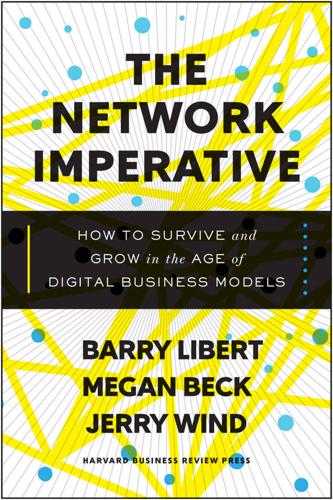
The Network Imperative: How to Survive and Grow in the Age of Digital Business Models
by
Barry Libert
and
Megan Beck
Published 6 Jun 2016
Brand Finance, press release, “Lego Overtakes Ferrari as the World’s Most Powerful Brand,” http://brandfinance.com/news/press-releases/lego-overtakes-ferrari-as-the-worlds-most-powerful-brand/. 4. Innocentive website, “What We Do,” http://www.innocentive.com/about-innocentive. Principle 6, Revenues 1. Brent Leary, “Amir Elaguizy of Cratejoy: Good Subscription Business Models Focus on Relationships Not Transactions,” Small Business Trends, August 14, 2015, http://smallbiztrends.com/2015/08/elaguizy-cratejoy-subscription-business-models.html. Principle 7, Employees 1. Travis Kalanick, “The Charms of the Sharing Economy,” Economist, The World in 2016 (single issue), November 6, 2015, http://www.theworldin.com/article/10631/charms-sharing-economy. 2.
…
Most people don’t love paying bills, and locking people into a contract where they have no choice but to subscribe will not increase affinity. But getting your customers to subscribe in order for you to form and develop a positive, two-way relationship provides many advantages on top of more revenue. Customer contributors (principle 5) and the subscription business model are complementary ways of inviting your customers into a mutually beneficial, long-term relationship with your organization. Take Every Opportunity to Delight Your customers’ lives are busy. The time they spend interacting with your organization is only a minute fraction of their week—although for most firms, it’s the only fraction they care about.
…
Turn your gaze outward, and leverage your most essential network: your customers. PRINCIPLE 6 REVENUES From Transaction to Subscription In a transactional business, the person really is probably only going to come around once or maybe twice if you have a really high repeat order rate. But in a subscription business, you’re going to see them by definition, over and over and over and over again. And you’re going to have an opportunity to impress them every single time. You’re in a relationship. —John Warrillow, author, The Automatic Customer DO YOU BOX? We don’t mean the sport with the big gloves.

Blitzscaling: The Lightning-Fast Path to Building Massively Valuable Companies
by
Reid Hoffman
and
Chris Yeh
Published 14 Apr 2018
Internet delivery and self-service allow new forms of distribution that weren’t possible in the packaged software world, such as Dropbox’s viral incentive of additional free storage for referring new customers. Nor is the pattern of Internet subscriptions limited to enterprise software. The dominant players in both music (Spotify, Pandora) and video (Netflix, Hulu, Amazon) also enjoy lower overhead and greater distribution by using the subscription business model. Another, less obvious benefit to this model is that once a subscription business achieves scale, the predictability of its revenue streams allows it to be more aggressive with long-term investments, since it isn’t obliged to maintain large cash balances to weather short-term variations in the business. This financial firepower can represent a major competitive advantage.
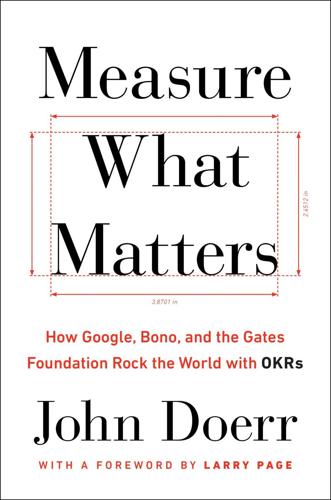
Measure What Matters: How Google, Bono, and the Gates Foundation Rock the World With OKRs
by
John Doerr
Published 23 Apr 2018
Voluntary attrition spiked every February, as waves of contributors reacted to disappointing reviews by taking their talent elsewhere. In all, the company devoted a total of eighty thousand manager hours—the equivalent of nearly forty full-time hires—to a mechanical process that created no discernible value. Adobe was transitioning full speed ahead to a cloud-based subscription business model, which it needed to keep winning. But even as the company moved its products and customer relations into a contemporary, real-time operation, its approach to HR remained shackled to the past. Adobe’s leap into the future, as reported in the India Times in 2012. In 2012, during a business trip to India, an Adobe executive named Donna Morris vented her frustrations over traditional performance management.

Exponential Organizations: Why New Organizations Are Ten Times Better, Faster, and Cheaper Than Yours (And What to Do About It)
by
Salim Ismail
and
Yuri van Geest
Published 17 Oct 2014
In his 2005 book, Free: The Future of a Radical Price, Chris Anderson built on the lower cost positioning of the disruptor, noting that pretty much all business models, and certainly those that are information-based, will soon be offered to consumers for free. The popular “freemium” model is just such a case: many websites offer a basic level of service at no cost, while also enabling users to pay a fee to upgrade to more storage, statistics or extra features. Advertising, cross-subsidies and subscription business models are other ways of layering profit-generating operations on top of what is essentially free baseline information. Kevin Kelly expanded further on this idea in a seminal post entitled “Better than Free,” which appeared on his Technium blog in 2008. In digital networks anything can be copied and is thus “abundant.”
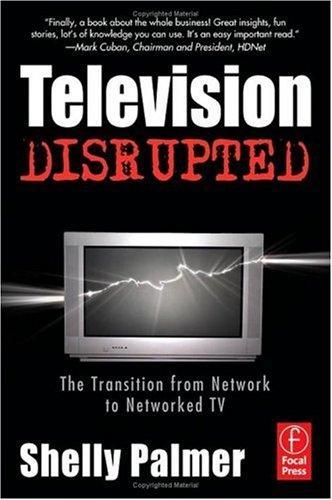
Television disrupted: the transition from network to networked TV
by
Shelly Palmer
Published 14 Apr 2006
HTTP The Hypertext Transfer Protocol is the set of rules for exchanging files (text, graphic images, sound, video, and other multimedia files) on the World Wide Web. Hybrid Fiber-Coaxial (HFC) A local cable TV or telephone distribution network. An HFC consists of fiber optic trunks ending at neighborhood nodes, with coaxial cable feeders and drop lines downstream of the nodes. Hybrid subscription A business model where subscribers pay for content but also see commercial advertising messages. Hyperlink a hypertext link or link in a graphic or text string which, when clicked, opens a new web page or jumps to a new location in the current page. Copyright © 2006, Shelly Palmer. All rights reserved. 13-Television.Glossary v2.qxd 3/20/06 7:29 AM Page 203 Hard Drive/Hard Disc – IP Bypass 203 Hypertext Any text within a document that is linked to another object in another location.
…
For whatever reason, the only successful pure subscription-based content businesses in America seem to be HBO and the other premium channels (some of which are still all movies, all the time) and businesses that provide one of the “Four G’s”: girls, God, games and gambling. (A fifth “G,” gay, has developed a significant following in recent years.) But, you can simply place the subscription businesses into their actual business categories: pornography, religion, video games (casual and console) and gambling. Pay-per-view Pay-per-view (PPV) has been around since the late 1970s.The modern version of PPV is simple: you select a program, pay for it, and watch it. There are several technological versions which we will discuss in more detail later.

Don't Be Evil: How Big Tech Betrayed Its Founding Principles--And All of US
by
Rana Foroohar
Published 5 Nov 2019
When Beijing forced the company to move all of its iCloud data centers for Chinese customers to the mainland, where they would be run by a local company that doesn’t need to comply with U.S. laws about data protection, Apple quickly acquiesced, showing that there are limits to its philosophy of preserving civil liberties when there are true threats to its business model in key markets.19 Even Netflix, which is in some ways the Teflon FAANG, one that comes in for less criticism because of a subscription business model focused on less sensitive data about our entertainment preferences, has bowed to foreign censors. In early January 2019, it emerged that Netflix had pulled an episode of its popular comedy show Patriot Act in Saudi Arabia, after government officials complained about one of the actors on the show criticizing Crown Prince Mohammed bin Salman for his role in the murder of Saudi dissident Jamal Khashoggi and for the Saudi war atrocities in Yemen.20 Meanwhile, Big Tech is taking on the role of Big Brother right here in the United States, working with local, state, and national authorities to create what is starting to look a lot like a surveillance nation.

Nothing but Net: 10 Timeless Stock-Picking Lessons From One of Wall Street’s Top Tech Analysts
by
Mark Mahaney
Published 9 Nov 2021
I’ll wrap up this NFLX stock-picking section with three key points: First, as with Priceline, when you come across a company that has consistently generated premium revenue growth—which I would define as 20%+—for a reasonably long period—at least five or six quarters—then you have come across what could well be a very good stock going forward. And you don’t need to worry about missing the big move. Especially with subscription businesses like Netflix. Second, subscription businesses are wonderful because when they are reasonably successful, two things happen. First, they provide an enormous amount of revenue visibility—as more and more customers stick with the service, more and more of any period’s revenue is “known” at the beginning of the period.
…
It doubled to $600 million by 2014. It more than doubled to $1.4 billion by 2017. And it almost doubled again to $2.7 billion by 2019. There was always a silver lining in this marketing spend cloud. Successful subscription businesses almost always show leverage in their marketing spend (i.e., it declines as a percentage of revenue), because that marketing spend is largely geared toward acquiring new subscribers. As subscription businesses grow, their existing customer bases grow, and their new customers become a smaller percentage of their total subscriber base. That marketing spend was depressing near-term earnings, but it was an investment that would likely allow margins to rise strongly over time.
…
Worse, for the first time in almost a decade Netflix reported a decline in US subscribers, with its subscriber base declining 130,000 from March to June. International subs also came in light during the quarter. The factors that caused the June 2018 quarter miss were largely at play here—lack of a robust new content slate, summer seasonality, the inherent challenge of forecasting a global consumer subscription business where users can sign up and sign off at a click’s notice. But there were two new plausible factors that worked to spook the stock down substantially for several months. First, earlier in the year Netflix had implemented another price increase—its fourth in the prior five years—though this one was more aggressive, because it was the first time Netflix had raised the price of its basic streaming plan—from $7.99 per month to $8.99.
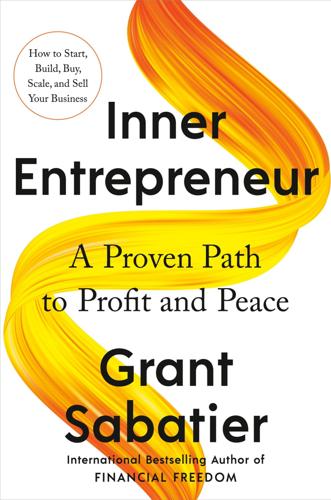
Inner Entrepreneur: A Proven Path to Profit and Peace
by
Grant Sabatier
Published 10 Mar 2025
Content-Writing Packages—Offer content-creation services with packages for blog posts, articles, or website copy, each with a set word count and turnaround time. SaaS Business A Software as a Service (SaaS) business sells software that customers access over the internet through a subscription. Popular SaaS businesses include Dropbox, Slack, Salesforce, and many others. As with any subscription business, a SaaS business can generate significant recurring revenue if you find product-market fit and add value to users. It’s also an asset-light business that you can continue to work on and update from anywhere in the world. Some SaaS businesses have achieved remarkable success. For instance, Salesforce excels in helping companies manage their customer relationships, boosting their efficiency and profitability.
…
However, AI is making it easier for those without development skills to build SaaS products, which lowers the entry barrier for new entrepreneurs and makes it easier for SaaS companies to be copied and potentially more difficult for new and existing SaaS companies to compete. As these skills become more commoditized and their functionality easier to copy, a strong brand and story become even more essential. Like any subscription business, retaining customers while adding new ones is challenging. SaaS businesses can also require a lot of money and be stressful to operate, especially if you take on venture capital funding. If you aspire to launch the next groundbreaking SaaS venture, focus on delivering software that genuinely enhances people’s lives and consistently meets their evolving needs.
…
Once you have your CAC per channel and profit-based CLV, you can determine the return on investment (ROI) for each of your marketing campaigns and platforms by comparing the CAC to the CLV. A CAC that is significantly lower than your CLV is a positive indicator of profitability. Growing a Recurring Revenue Business If you’re running a recurring revenue or subscription business, you should track your average revenue per user (ARPU), churn rate, and net dollar retention (NDR). Average Revenue per User Average revenue per user (ARPU) calculates the average revenue generated by each user or customer over a specific period, usually a month or a year. By dividing the total revenue by the total number of customers, businesses can determine the average revenue they receive from each client within a given time frame.
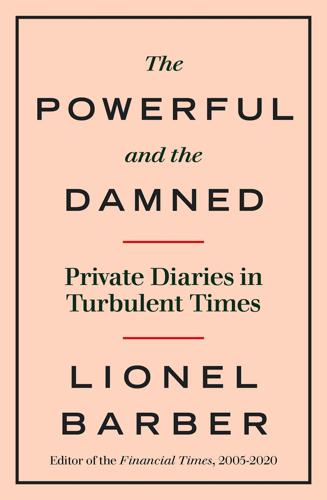
The Powerful and the Damned: Private Diaries in Turbulent Times
by
Lionel Barber
Published 5 Nov 2020
But Sarkozy later formed a common front with Brown in tackling the financial crisis within the forum of the Group of 20 industrialised countries. It was Brown’s finest hour. TUESDAY, 8 APRIL The Financial Times has won newspaper of the year in the British press awards, a resounding endorsement of our return to the gold standard, pledge one in my manifesto as editor. It vindicates our shift to digital subscriptions, a decisive change in our business model underpinned by higher prices. My only concern is complacency amid the gathering storm in the markets. We’re sitting on a huge story. If we get it wrong, we’ll be written off as a one-trick pony. If we get it right, we’re off to the races. TUESDAY, 22 APRIL Marcus Brauchli has been ousted at the Wall Street Journal.
…
Like me, he does not believe that ‘information wants to be free’ – a glib observation, usually parroted by columnists who want to use the internet to attract a bigger audience, maximising their personal reach with no return to their employer. We agree the best way forward is to build the FT’s subscription business. Right now, online subs have stalled around 80,000, while the newspaper still accounts for circulation of more than 400,000, albeit in a shrinking market where the costs of printing and distribution are fixed and advertising is in decline. Our business model, we agree but cannot say, is no longer fit for purpose.
…
W. 54, 63, 188, 314 Bush, George W. 31, 54, 55, 56, 63, 106, 110, 169, 188, 233, 435 Buttigieg, Pete 413 BuzzFeed 258, 395 Cadbury 263 Cambridge Analytica 394, 394n Cameron, David ix, xvi, 81–2, 97, 98, 125, 148, 151, 152, 158, 159, 161–2, 164, 174, 177, 180–81, 191–2, 193, 195, 196, 198, 203, 204, 205, 209, 222, 223, 226–7, 244, 259, 260, 263, 267, 283, 286, 288, 289, 290, 304–5, 308–10, 316, 319, 320, 321, 323, 326, 333, 344, 345, 374–5, 382–3, 388, 389, 414, 417, 427, 438 Cameron, Samantha 81–2, 161–2, 198, 304 capitalism: liberal capitalism model xi, xii, 117, 147n, 276, 312, 330, 334, 335, 339, 353, 355, 401, 419, 434, 436, 439; reform of 352, 353, 410, 439 Carnegy, Hugh 321 Carney, Mark 122, 323–4, 327, 341, 365–6, 371, 412 Catalan independence movement 219, 226 Cayne, Jimmy 24, 25, 85 Centre for European Reform 388–9 Chan, Andy 393 Charles, Prince x, xii, 264–6, 267, 268–70 Charlie Hebdo terrorist attack (2015) xv, 281 Cheney, Dick 54, 56, 233 Chidambaram, P. 38 China xi, 30, 31, 31n, 98–9, 117, 120, 123–4, 123n, 133, 140, 162–3, 169, 182–3, 206–7, 213–14, 228, 233, 241–2, 271, 303–6, 309, 344, 347–8, 351–2, 366, 374–5, 376, 390, 392–3, 395–8, 399, 410, 414, 434, 436, 439, 440 China Entrepreneur Club 233 Chubais, Anatoly 229 Churchill, Winston 24, 24n, 95, 128, 314, 310, 364, 422 Citigroup 68, 69, 85, 113, 114, 228, 404 City Lecture, Cambridge University 264 City of London xii, xiii, 25n, 106, 180, 224, 259, 297, 334, 365, 366, 429 Clark, Pilita 379 Clegg, Miriam 151, 195 Clegg, Nick 151–2, 158, 159, 162, 195–6, 275n, 286, 321, 394, 395, 414 Clinton, Bill 82, 150, 206, 208, 233 Clinton, Hillary 82, 96, 133, 233, 315–16, 331, 332 Clooney, George 204–5 Coalition government, UK 156–7, 158, 159–60, 193, 195–6, 209, 258–60, 275, 275n, 288, 289, 290, 354; austerity policies 209, 210, 259, 273, 289, 319, 438; Big Society concept 152–3 Cochrane, Alan 273 Cohen, Jared 332 Cohn, Gary 341–2 Cold War 96, 233, 314, 354, 395, 396, 398, 436, 438 collateralised debt obligations (CDOs) 45 Collins Stewart 14–15, 17–18, 19–20 Colloque (Anglo-French forum) 255–6 Colombia 140–42 Comcast 268 Communism, collapse of Soviet 88, 129, 137, 228, 344 Conservative Party 67, 71, 97, 106, 128, 139, 148, 151, 152–3, 156–8, 158n, 159, 174, 180n, 195–6, 217n, 223n, 227, 227n, 232, 244, 260, 273–5, 275n, 283–4, 287, 288, 289–90, 309, 310, 327, 333, 343, 345–6, 353–4, 358, 359–60, 365, 381, 388, 410, 410n, 411, 412, 414, 423 Corbyn, Jeremy 11n, 303, 340, 341, 345–6, 354, 363, 399, 402, 410, 427 Costolo, Dick 210–11 Coulson, Andy 191, 223, 223n Covid-19 xi, xvii, 123, 130, 383, 398, 433, 434–6, 438–9, 440–41 Cox, Jo 319 Crabtree, James 247 credit derivatives 37, 62, 66, 186 credit-rating agencies 62, 62n, 84 Crimea 91, 91n, 237n, 239, 275, 277 Crosby, Lynton xvi, 283–4, 287–8, 290, 345–6, 388 Crosby, James 18–19 Cummings, Dominic xv, 313–14, 420n, 423–4, 438 Dacre, Paul x, 76, 192, 195, 196–7, 220, 221, 227, 233, 239, 257, 331, 331n, 357, 363 Daily Mail x, 41, 67, 126, 151, 152, 192, 195, 220, 221, 239, 316, 327, 331, 334, 363 Daily Mirror 11, 32, 100 Daily Telegraph 32, 35, 51, 67, 126, 135–6, 135n, 192, 197, 273, 358, 358n, 359, 422 Dalian Wanda 213 Dalton, Stephen 148, 150 Danone 263 Darling, Alistair 69–70, 83n, 101, 101n, 136, 273 Darroch, Jeremy 267–8 Davidson, Heather 83 Davies, Howard 76–7, 76n, 190 Davis, David 362–4, 363n Davis, Ian 122, 197 DDB (advertising agency) 34 deflation 39, 391 Dell, Michael 120–21 Delors, Jacques 83, 341 Democratic Party, US 82, 98, 99, 187–8, 330, 332, 396; convention (2004) 82, 99; convention (2008) 98, 99; Democratic National Committee (DNC) 330 see also US Presidential Election Democratic Unionist Party (DUP) 157, 157n, 399, 425 Deng, Wendi 191 Deng Xiaoping 124, 129, 183 ‘de-platforming’ 262 Deutsche Bank 295, 383, 404, 410 Diamond, Bob x, 167–8, 212 Dickie, Mure 185 Dickson, Martin 13, 18–19, 102, 106–7, 431 Dilenschneider, Robert 84–5, 332 Dimbleby, Jonathan 340 Dimon, Jamie xiv, 24, 24n, 93–4 Dinmore, Guy 162 Disney 213, 214, 268 Doerr, John 215–16 Döpfner, Mathias x, 283, 291–3, 295, 407 dotcom crash (2000–2001) 4, 16, 76, 84, 184, 228 Dow Jones 59–60, 65, 66, 135n, 282 Dowler, Milly 190 Draghi, Mario xiv, 178–9, 198–9, 200, 212–13, 223, 226, 320, 341, 367, 368, 402, 412–13, 415 DreamWorks 213 Dubai xiv, 102–3, 111, 112, 135, 168, 175 Duberstein, Ken 188 Dudley, Bob 163, 239 Dumfries House 264–5, 269 Duque, Iván 142 Economist, The 26, 205, 221, 238, 258, 282, 294, 354, 381, 389 Edano, Yukio 185–6 Edelstein, Jillian 208 Edinburgh, Prince Philip, Duke of 304 Edward VIII, King 198, 201 Egypt 54, 107, 177, 331 El-Erian, Mohamed: When Markets Collide 113 Elizabeth II, Queen 23, 271, 303–4, 305 England, Andrew 260–61 En Marche 353 Entwistle, George 217–18 Epstein, Jeffrey 7, 7n Erdoğan, Recep Tayyip 335 euro xiii, 61, 64, 84, 100, 172–3, 178, 179, 180, 198, 212, 223, 228, 413, 429 European Central Bank (ECB) xiv, 61, 69, 84, 100, 178–9, 179n, 188, 198–9, 203, 212, 223, 226, 367–8, 402, 412–13, 415–16, 436 European Commission 83, 84, 84n, 179, 274, 343, 344, 363, 402, 406 European Court of Human Rights (ECHR) 274 European Economic Community (EEC) 227 European Financial Stability Facility (EFSF) 198–9 European People’s Party (EPP) 97 European Round Table of Industrialists 409 European Union 437; Brexit see Brexit; Covid-19 and 436, 437; Customs Union 328, 339, 354; euro see euro; fatal flaw in 99–101; ‘fiscal compact’ proposal 198; free movement of people 324; Lisbon treaty 64, 64n, 67, 381; Maastricht treaty 64n, 342, 389, 426, 433; Single Market 196, 315, 324, 328, 339, 341, 354, 366, 425; sovereign debt crisis 100–101, 148, 153–5, 172–3, 177, 179, 180, 188, 198–9, 212, 219, 224, 226, 238–9, 253, 341, 368, 413, 415–16 European University Institute, Fiesole 178 Evans, Harry 6–7, 10 Evening Standard 126, 136–7, 138–9, 345 Exxon Mobil 155 Facebook xi, 178, 200, 215, 216, 222, 247, 347, 394–5, 394n, 439 Fairhead, Rona 29, 66 ‘fake news’ 41, 346, 347 Fallon, John x, 251–2, 257, 281–3, 292, 294, 295, 296, 297, 302 Farage, Nigel 253, 259, 262, 266, 284, 349, 412 ‘fast’ and ‘slow’ news 240, 255 Federal Reserve, US 76, 85–7, 86n, 88, 94–5, 114, 199, 241, 415, 436 Federal Reserve Bank of New York 87–8 Felsted, Andrea 235 Ferguson, Jason 247 Ferguson, Alex 247–8, 251, 389 Fidler, Stephen 21 Fillon, François 205 financial crisis, global xi, xiii–xiv, 19, 22n, 25, 31n, 37n, 44, 62, 66, 69–72, 74–7, 81, 83–8, 92, 93–5, 96, 100–107, 108, 109, 110–13, 114–16, 117–23, 123n, 124, 125, 127–9, 130, 131, 133, 134, 138, 144, 154, 173, 174, 186–7, 228, 232, 245n, 364, 401, 434, 435, 436; Bear Stearns collapse 25, 85, 87–8, 93, 98, 104; Lehman Brothers collapse xiv, 5n, 37, 81, 101–2, 104, 105, 107, 121, 160, 199, 432 financial liberalisation, era of 129 Financial Services Authority 76n, 106, 138 Financial Times xi; ‘A List’ contributors 189–90; advertising revenues 4, 9, 26, 255, 288; advertising/marketing campaigns 4, 33, 34, 70; alpha-male problem 209; app 137–8, 214; ‘B2B’ business 118–20; Boldness in Business awards 262; Bracken House, headquarters move from One Southwark Bridge to 373, 391, 404, 411; Bracken Room 24, 25, 101, 398; ‘Brighton’ meeting 73–4; British Press Awards newspaper of the year (2008) 92; British Press Awards newspaper of the year (2018) 379; Business Book of the Year 112–13, 166, 243–4; Business of Luxury Summit, Monaco (2009) 156; circulation 4, 26, 312, 379, 401, 406–7, 431 see also subscriptions, digital; code of conduct 201; Collins Stewart libel case 14–15, 17–18, 19–20; Commodities Summit 286–7; core mission 9; cost cutting 16, 26, 147–8; ‘digital first’ journalism 224–5, 240, 255, 403, 440; digital transformation of xi, xv, 10, 17, 43, 74, 92, 117–18, 147, 201, 218, 224–5, 240, 241, 255, 257, 272, 285, 394, 395, 401, 403, 432, 440; editorial independence, principle of 60, 93, 251, 282, 288–9, 292, 294–5, 297, 299, 311, 394; editorial leader conference 209–10; FastFT 224; FT Alphaville financial blog 27; ft.com 6, 69–70, 114, 117–19, 167, 240, 321, 380; Future of Capitalism series 129, 133; Future of News conference 379–80; gender balance at top of, plans for 340; Gulf, edition for the 135; ‘Here Day’ 202, 202n; hiring of staff/power to shape through appointments 5, 6, 12–13, 16, 26–7, 43, 51, 158, 189–90, 255, 403; House and Home, Weekend FT supplement 174, 264, 270; How to Spend It 104; in-house lawyer 20n, 200–201, 258, 405; independent sources, stories supported by two 9, 20, 56, 201; ‘Inside Blair Inc’ feature 142; investigations team 291, 368–9, 381–2, 405; Latin America coverage 140–42; LB accepts Nikkei request to stay on as editor 300; LB appointed editor 3–10; LB daily routine as Editor 35–6, 175–6; LB hosts team leader summer event 296–7; LB leaves post as Editor of 430–32; LB news editor of 9, 15; LB rotates top team 147, 302; LB’s essays for 355, 381, 427, 429; LB’s New Year note to staff, LB’s 224–5; LB’s overseas trips see individual nation name; LB’s second term as editor of 197–8, 202–3; LB succession planning at 252, 312, 391, 395, 401, 404, 426, 428, 429–31; LB US managing editor of 3–5; LB ‘walking the floor’ of 431; letters to the FT editor 83; Leveson inquiry and see Leveson inquiry; Lex Column 99–100, 361; Lunch with the FT 72–3, 120, 175, 176, 188, 229–30, 325, 326, 343; Magazine, weekend 208–9, 219, 302, 381, 401, 429; managing editor, change of 26n, 117, 147, 203, 224, 403; mid-morning meeting of commentators and ‘leader writers’ 103–4; motto, revival of original 58; Nikkei and see Nikkei; 125th anniversary 224, 225, 228–30, 234, 235; 1 million paying readers by 2020 target 312, 379, 401, 406–7, 431; origins 24–5, 25n, 224; Pearson and see Pearson; Pearson sells to Nikkei xiv, xv, 281–3, 284–5, 288–9, 291–300, 301–3, 304, 305–6, 310–11, 312, 403, 407, 428; pensioners’ lunch 277; Person in the News 21, 21n; Person of the Year 166–7, 223, 314, 357–8; publishing system 15–16, 26; ‘rebrush’/redesigns 34, 58, 254–5, 272; self-regulation, system of 257–8, 258n; sponsors 166, 243, 262; subscription business 26, 92, 118, 119, 229, 285, 312, 322, 339, 346, 379, 401, 406–7, 431; ‘thought leader’ brand 172; union members 202–3, 202n; US managing editor 5, 5n, 130, 147, 389; US, move into 3–4; ‘We Live in Financial Times’ marketing slogan 34, 44; Weekend FT 127, 174, 194, 208–9, 219, 302, 381, 401, 429 Fischer, Hartwig 377, 377n 5G technology 184, 375 Five Star Movement 203, 380 Flanders, Stephanie 42–3 Fleurot, Olivier 8, 9, 15–16, 25–6, 29 Ford, Jonathan 158 Fowler, Susan 357–8 Fox, Liam 274 Foy, Henry 417, 419 France x, 62, 69, 91–2, 95, 172, 177, 185, 198, 205, 255–6, 263, 326–7, 339, 341, 343–4, 353, 355, 366, 380, 408, 412–13 Fraser, Simon 319–20 Freeland, Chrystia 12–13, 12n, 85, 130, 147, 147n Fridman, Mikhail 90, 275 Friedman, Alan 27–8, 27n Frost, David 45, 137, 245 Frost/Nixon (Morgan) 45 FT Group 29 Fukushima nuclear reactor disaster (2011) 181, 185 Fuld, Dick x, xiv, 46, 85–6, 105 Fu Ying x, 124, 125–6, 241, 242 Gaddafi, Muammar 142, 177, 180, 259 Gandhi, Indira 407 Gandhi, Mahatma 408 Gandhi, Rahul 245 Ganesh, Janan 205 Gapper, John 43, 70, 88, 104–5, 190, 209–10, 221, 432 Garrahan, Matthew 213, 357, 379, 384 G8 237, 237n General Election, UK: (1992) 157, 228, 261; (1997) 12, 101n, 157; (2001) 12, 157; (2005) 12, 157; (2010) 148, 150–53, 156–9, 158n, 174, 173; (2015) 11n, 274, 283–4, 286–8, 289–90, 345; (2017) 343, 345–6, 353–4, 363, 388; (2019) 402 General Electric (GE) 66, 162–3 General Motors (GM) 221, 376 George, Eddie 138 Georgian National Theatre Company 192–3 Germany ix, xiii, xv, 31, 67, 69, 90n, 95, 101, 149, 172, 173, 179, 180, 188, 198, 199, 203, 219, 228, 237–8, 238n, 242n, 274, 283, 291, 292, 309, 331, 339, 343, 358–9, 368, 401, 404, 405, 406, 407, 413, 415, 416, 419, 421, 427, 433–5, 437 Ghosn, Carlos 375, 375n Giampaolo, David 233 Gibbs, Robert 131, 359 Gibson, Janine 395 Giles, Chris 210 Glasenberg, Ivan 287, 428, 428n Glastonbury Festival 322 Glencore 286, 287, 428n globalisation 34, 116, 228, 312, 333, 335, 348, 434 Gnodde, Richard 429–30 Gold, Dore 109, 109n Goldman Sachs xiv–xv, 24n, 31, 31n, 37, 55, 84n, 86, 87, 112, 122, 166–7, 178, 179, 243, 341, 342, 429 González, Felipe 225 Goodwin, Fred 22–3, 22n, 72, 75 Google xi, 137, 160–61, 178, 214–15, 326, 332, 439; Google Camp conference, Sicily 422; Mountain View headquarters 73–4; Street View 160–61 Gorbachev, Mikhail 90, 136–7, 138, 250, 344 Gordon, Sarah 209, 287, 383 Gove, Michael 255, 315, 316–17, 318, 323, 362, 410 Gowers, Andrew 5, 5n, 7–8, 12, 13, 26, 46, 105, 160 Grade, Michael 65 Grant, Charles 388–9 Grauer, Peter 212–13 Grayling, Chris 274 Great Depression 94, 114, 130, 335 Greece 99–100, 148, 153, 154, 172–3, 177, 211, 212, 238, 253, 341, 413 Greenberg, Maurice ‘Hank’ 36 Green, Damien 362–3 Green, Philip x, 162, 167, 235, 371 Greenspan, Alan 76–7, 88, 94, 129 Greig, Geordie 265 Grimes, Chris 403 Grove, Andy 420 G20 92, 117, 123, 123n, 131, 143, 408, 419, 420 Guardian 27, 35, 76, 82–3, 151, 161, 165, 190, 191–2, 197, 236, 237, 255, 258, 290–91, 318, 395, 440 Guerrera, Francesco 102 Guha, Krishna 94 Guinness, Sabrina 300–301 Gu Kailai 206 Gunvor 286, 287 Guthrie, Jonathan 361 Haass, Richard xvi–xvii Hague, William 274–5, 275n Hall, Jerry 317 Hall, Tony 217 Hamas 54, 108, 108n Hammond, Philip 324, 342–3, 345, 362, 365, 373, 420, 420n Hancock, Matt 413 Hannigan, Robert 149, 149n Hanson, Nigel 20n, 200–201, 258, 405 Harding, James 28, 192, 389 Harding, Robin 181, 284, 391 Harry, Prince 422 Hastings, Max 126–7 Hastings, Reed 398–9 Hayward, Tony 160, 163 HBOS 18–19, 104, 122, 127, 128 Heinz 263 see also Kraft Heinz Heywood, Neil 206 Heywood, Jeremy 258–60, 342, 364–5, 414–15 Hill, Andrew 244 Hill, Dave 11 Hille, Kathrin 183 Hill, Fiona 342, 349, 349n Hill, Jonathan 342–3, 342n Hilton, Steve 345 Hiroshima, Japan 284 Hitchens, Christopher 56–8, 57n, 72–3, 205–6 Hizbollah 107, 249 HK National Party 393 Holbrooke, Richard 57, 132–3, 132n, 148n, 170 Hollande, François 255–6 Hong Kong xvi, 60, 217n, 304, 350–52, 390, 392–3, 414 Hornby, Andy 19 Hoskins, Carine Patry 201 House of Commons 152, 193, 259, 343, 363n, 399–400, 423; Digital, Culture, Media and Sport Committee 216n, 239–40; Treasury Select Committee 127 House of Lords 72, 158, 229, 275, 275n, 349, 363, 363n, 394, 438 House of Representatives, US 106 Howard, John 283 HSBC 22, 22n, 121, 122, 237 Huawei xii, 182–4, 375, 398, 399 Huffington, Ariana 99 Huffington Post 99, 258, 380n Hu Jintao 99 Hunt, Jeremy 274, 410, 411–12, 413, 425 Hussein of Jordan, King 102, 110 Hussein, Saddam 28, 57 Hutton, John 71 Hyon Hak-Bong 253–4 Ignatius, David 276 IMF (International Monetary Fund) 118, 123, 219, 246n, 402, 412 Immelt, Jeffrey 162–3 immigration xi, 67, 203, 283–4, 309, 313, 318, 319, 334, 335, 343, 354, 410, 420 Inagaki, Kana 181 Independent 32, 41, 192 Independent Press Standards Organisation (IPSO) 257, 257n India ix, 30, 37–40, 123n, 129, 168–70, 203, 228, 244–7, 309, 348, 383, 407–9 inequality xiii, 193, 273, 410 inflation 30, 52, 95, 138, 251, 415, 435 Instagram 200, 347, 395 interest rates 30–31, 61, 70, 86, 100, 138, 323, 415 International Security Assistance Force (ISAF) 149, 150 Iran 54, 245n, 248–9, 249n, 250, 251, 251n, 259, 307, 377, 425; US nuclear deal with 248–9, 250, 251, 259, 307 Iraq 28, 108, 111, 243n; US-led war in 11, 12, 54, 55, 56, 57, 108, 110, 111, 142, 206, 208–9, 228, 330, 377, 387 Ireland 148, 188–9, 212, 425 ISIS 378 Islam, radical xv, 107, 108n, 170, 171, 248, 249, 251, 281, 378, 397 Israel xiv, 102, 107–9, 109n, 141, 208–9, 250, 251, 292, 319, 378, 382 Italy 27–8, 27n, 99, 100, 162–3, 178–9, 196, 203–4, 212, 214, 238, 239–40, 367, 380, 400, 413 Ivanov, Sergei 329–31, 417 Jackson, Andrew 348 Jacobs, Emma Gilpin 201 Jacques, Jean-Sébastien 386–7 Jain, Anshu 295 Jaitley, Arun 244–5 Jang Song-thaek 253–4 Japan ix, xv, xvi, 17n, 69, 181, 185–6, 281, 283, 284–5, 296, 298–9, 300, 301–3, 304, 305–6, 308, 325, 334, 359, 367, 371–2, 374, 390–92, 402, 403–4, 408, 411, 420, 427–9 Javid, Sajid 410, 420n Jenkins, Antony 285–6 Jenkins, Patrick 166 Jio 40, 247 jishuku (‘self-restraint’) 185–6 Johnson, Boris xvi, 37–8, 38n, 40, 98–9, 138, 139n, 158, 159, 200, 242–3, 244, 310, 315, 323, 325, 344, 345, 358, 359, 362, 371, 373, 388, 402, 410, 410n, 412, 420, 420n, 421, 422, 423, 425–6, 435, 437 Johnson, Jo 37–8, 38n, 40, 244, 373 Johnson, Woody 364 Jones, Claire 416 Jonsson, Martin 240 Jordan 102, 107, 108, 110 JPMorgan Chase xv, 24n, 88, 93–4, 98, 142 Judge, Igor 194–5 Juncker, Jean-Claude 274–5, 343–4, 406 Kagame, Paul ix, xvi, 142, 340, 354–6, 380 Kaiser, Bob 332 Kalanick, Travis 357 Karzai, Hamid 149–50 Kasparov, Garry 89, 91 Katzenberg, Jeffrey 213–14 Kaufman, Henry 186–7 Kazmin, Amy 407 Kellaway, Lucy 159 Kelly, General John 366n, 367, 367n Kelner, Simon 32, 41 Ken Hu 183, 398, 399 Kengeter, Carsten 193 Kennedy, John F. 96n, 380–81, 381n Kenny, Enda 188–9 Kerr, Simon 112 Kerry, John 68, 222 Keswick, Henry 304, 304n Keynes, John Maynard 88, 129 Khalaf, Roula x, 29, 102–3, 110, 111–12, 135, 177, 209, 248, 250, 302, 306, 308, 321, 322, 339, 371, 379, 390, 392, 428–9, 430, 431, 432 Khan, Imran 170–71 Khan, Sonia 420, 420n Khashoggi, Jamal 308, 392 Kim Jong-un 253, 374, 397 King, Mervyn 30–31, 31n, 71–2, 76, 106, 128–9, 173, 212 King, Rodney 148 King, Stephen 237 Kinnock, Neil 157, 261 Kissinger, Henry 54, 207 Kita, Tsuneo 298, 299, 300, 301, 302, 310–11, 312, 321, 391, 401, 402, 404, 411, 428–9, 430, 432 Klerk, F.W. de 229–30 Knight-Bagehot fellowship programme, Columbia Journalism School 46 Kock, Gerhard de 51 Kohl, Helmut 344, 426 Kosovo 89, 89m Kraft Heinz 263, 352, 353 Kushner, Jared 367 Kuwait 111, 142, 206, 208 Kynge, James 124, 303, 393 Kyriacou, Kristina 268, 270 labour market, growth in size of world’s 228 Labour Party 11, 11n, 12, 30, 41, 64, 68, 71–2, 101n, 127, 128, 151, 157–8, 158n, 159, 162, 163–4, 193, 207, 228, 239, 259, 273, 284, 287, 288, 290, 303, 319, 340, 341, 354, 377n, 402, 438 Lady Margaret Hall, Oxford 395 Lambert, Richard 115–16, 244, 252, 297, 411 Lam, Carrie xvi, 350–51, 393, 414 Lamont, James 168, 203, 224, 302, 403 Lansley, Andrew 180, 180n Lavrov, Sergei 237 Lawson, Nigel 229 Lazard 121, 121n Leahy, Terry x, 23–4 Lebedev, Alexander 137, 138–9 Lebedev, Evgeny 136–7, 138–9, 139n, 376–7 Lee Jae-yong (J.Y.
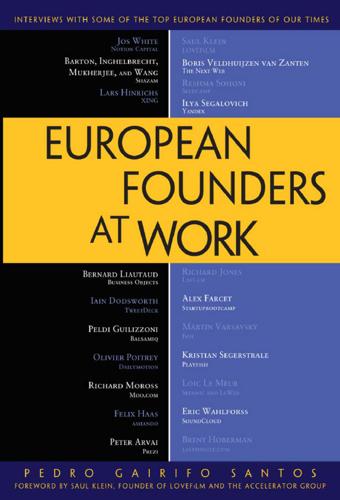
European Founders at Work
by
Pedro Gairifo Santos
Published 7 Nov 2011
It's working. It's generating revenues. There is a clear revenue stream. You take money from people. You send them discs. And as long as you keep offering them a good service, you've got a good business.” People at the time really understood, this was in a down economy, that a subscription business was a very good, predictable revenue model. People looked at mobile phone companies. People looked at cable companies and said, “Okay. I understand the economics of a business like this.” In terms of “Is there a need? Is there a market? Is there a good business model?”—it ticked all the boxes. Santos: So, you decided to go forward with this business.
…
Santos: Okay, and the objective of that round of funding, was it to grow internationally? Hinrichs: The company was cash-flow positive as of ninety days of operation. So when I funded the company, the company was already cash-flow positive. I wanted to hire some more people. Since it's a subscription business, we had the issue of that we have liabilities on the one side. You can't book the entire revenue you get into the months, so you have to have accrual over the time. In bookkeeping, it's a liability, and to solve this kind of liability problem, yes or no, it's a theoretical problem—does it work?
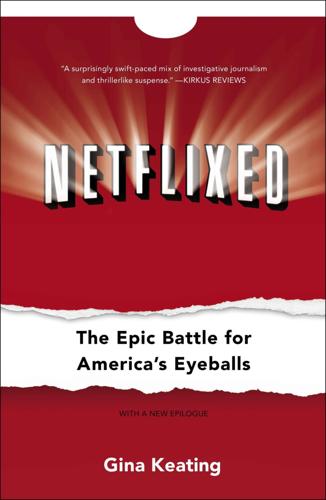
Netflixed: The Epic Battle for America's Eyeballs
by
Gina Keating
Published 10 Oct 2012
Its share price had risen nearly 400 percent, and its steady average revenue growth of more than 100 percent each year was starting to attract attention. Even though they’d had no real competition since launching the subscription plan, Netflix had nevertheless continued smoothing out kinks in its subscription business and was pushing ahead in all areas: consumer satisfaction was high; cancellations were low; and finally the service was being noticed by regular Americans, who were signing up at a clip of nearly three thousand per day. The potential online rental market was huge, maybe as large as twenty million subscribers, based on the penetration they were seeing in their first market, the San Francisco Bay Area, where more than 5 percent of residents were members, Hastings told investors.
…
Shortly after Blockbuster dropped its rates, Walmart cut its prices below both services, to $17.36 per month. Hastings also wanted to gauge whether Fleming was open to a possible offer from Netflix to buy Walmart’s meager subscriber base. The talks that night went nowhere, mainly because Fleming was trying to negotiate a partnership with Yahoo! in hopes of making the subscription business work. As luck would have it, a young Netflix executive ran into a female acquaintance who worked for Walmart.com at a San Francisco Bay Area music venue. The two often joked about the rivalry between their two companies. One night the woman told him over drinks that Walmart’s online service had little support from its corporate parent.
…
Kaltschnee had started a Web design firm with three other guys in the mid-1990s that became one of the first subscription services for graphics. They sold the company a few years later, and Kaltschnee stayed on to create a second subscription service for the buyers’ stock photography collection. He knew about subscription businesses from that experience, and he wanted to learn how Netflix had been so successful. In November 2003, he launched the blog HackingNetflix.com, in keeping with his pledge to deconstruct the service and learn how it operated; its masthead was Netflix-red and its observations, gentle. Kaltschnee was an unabashed advocate for Netflix from the start, and he’d joined a generation of bloggers who wanted to share their personal experiences with a product or corporation.
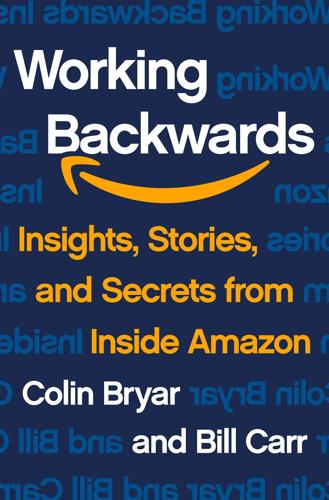
Working Backwards: Insights, Stories, and Secrets From Inside Amazon
by
Colin Bryar
and
Bill Carr
Published 9 Feb 2021
We also learned that the $30–40 million figure we had heard was off. By the time we got started, Netflix was spending twice that on content. In the subscription business, it’s no good to come out second with a copycat offering. We had to offer movies and shows that Netflix didn’t have available. We also had to have a different offering from Hulu, which had a lock on most of the best series from Fox and NBC. In the TVOD business, differentiation based on selection wasn’t possible—Amazon, Apple, Microsoft, and Sony all had the same titles—but in the subscription business, a unique catalog was key. We brainstormed countless concepts. One approach was to go deep in specific genres like horror or documentaries.
…
When it came to content controlled by the studios, nothing much had changed. Content creators like HBO had an advantage because they had a unique and exclusive content offering—shows like The Sopranos and later Game of Thrones—and had exclusive movie licensing deals with the studios. At that time, no other company was in the internet-delivered subscription business, so HBO had the field mostly to themselves. They could license and accumulate a lot of great movies and TV shows with very little competition. But as the Apple and HBO business models demonstrate, there was one important way that the world of digital media was the same as the old, analog media world: there was still a great advantage to be had in control.
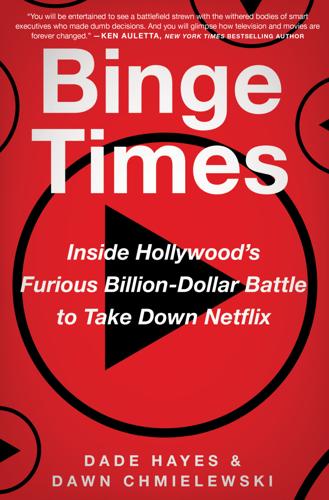
Binge Times: Inside Hollywood's Furious Billion-Dollar Battle to Take Down Netflix
by
Dade Hayes
and
Dawn Chmielewski
Published 18 Apr 2022
Viewership was growing on free, ad-supported outlets like Pluto TV and Tubi, which were enticing to customers unboxing a new smart TV or any of the millions of Americans looking to cut the pay-TV cord. Mounting a pure subscription offering to challenge entrenched players like Netflix, in Burke’s view, seemed daunting. “The math is very challenging. With a subscription business, the one thing you know is you start with zero and then at the end of the year you might have three million subs or whatever. And then the second year, you go from three million to six million. It’s a slow ramp for a subscription business. . . . You have to show up with the product and cost of it on day one, despite the fact that you haven’t yet built the subscriber base. So, it’s an economically painful model.”
…
“But if you don’t jump on top of it and ride the wave as technology gets better—twice as good every two years—you’re likely to let somebody else steal your business away by appealing to a different set of customers for whom it does work. Once the wave sweeps through your mainstream customers, it’s over.” Hastings told investors that Netflix planned to straddle both worlds, physical and digital, focusing on aggressively growing its profitable DVD subscription business even as it launched its streaming service. The lucrative rental business would sustain the company until Netflix could overcome the barriers that prevented consumers from fully embracing streaming—namely, a limited selection of content and the lack of a technology to deliver movies and TV shows to the living room TV.

The End of Ownership: Personal Property in the Digital Economy
by
Aaron Perzanowski
and
Jason Schultz
Published 4 Nov 2016
Kashmir Hill, “Samsung Wants You to Put a Motion Tracker under a Loved One’s Mattress—What Could Go Wrong?” Fusion, September 4, 2015, http://fusion.net/story/193514/samsung-sleepsense-loved-ones-mattress/, accessed November 20, 2015. 8. Rob Price, “The Smart-Home Device That Google Is Deliberately Disabling Was Sold with a ‘Lifetime Subscription,’” Business Insider, April 5, 2016, http://www.businessinsider.com/revolv-smart-home-hubs-lifetime-subscription-bricked-nest-google-alphabet-internet-of-things-2016-4, accessed April 10, 2016. 9. Arlo Gilbert, “The Time That Tony Fadell Sold Me a Container of Hummus,” Medium, April 3, 2016, https://medium.com/@arlogilbert/the-time-that-tony-fadell-sold-me-a-container-of-hummus-cb0941c762c1#.nhl96qogu, accessed April 10, 2016. 10.
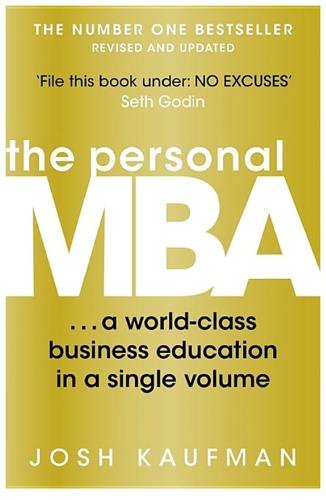
The Personal MBA: A World-Class Business Education in a Single Volume
by
Josh Kaufman
Published 2 Feb 2011
If you cancel a Netflix subscription, three to six months later you’ll receive a postcard and/ or e-mail from Netflix with an offer to resubscribe at a reduced rate. If you don’t reply, they’ll send another message every few months until you resubscribe or request to be removed completely from their system. Since Netflix is a Subscription business, every reactivated customer means a new monthly stream of income, which greatly enhances the Lifetime Value (discussed later) of each customer. Reactivation is typically a quicker, simpler, and more effective approach to increasing revenue than attracting new customers. Your old customers already know and trust you, and they’re aware of the value you provide.
…
Lifetime Value is the total value of a customer’s business over the lifetime of their relationship with your company. The more a customer purchases from you and the longer they stay with you, the more valuable that customer is to your business. One of the reasons Subscriptions are so profitable is that they naturally maximize Lifetime Value. Instead of making a single sale to a customer, Subscription businesses focus on providing value—and collecting revenue—for as long as possible. The longer a customer remains Subscribed and the higher the price they pay, the higher the Lifetime Value of that customer. The higher your average customer’s Lifetime Value, the better your business. By understanding how much your average customer purchases and how long they tend to buy from you, you can place a tangible value on each new customer, which helps you make good decisions.
…
The Lifetime Value of each new Proactiv customer is so high that it doesn’t matter that Guthy-Renker “goes negative” on the initial sale—the company makes a ton of money, even if it loses money on a few customers who don’t continue with the program. The first sale is sometimes called a “loss leader”—an enticing offer intended to establish a relationship with a new customer. Many Subscription businesses use loss leaders to build their subscriber base. Magazines like Sports Illustrated offer gimmicks like football phones and spend a fortune on their annual Swimsuit Edition in an effort to attract new subscribers. These enticements may absorb up to a year’s worth of Subscription revenue, but the company comes out ahead when you consider the Lifetime Value of each customer.
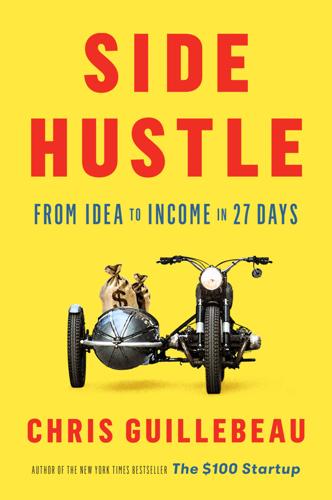
Side Hustle: From Idea to Income in 27 Days
by
Chris Guillebeau
Published 18 Sep 2017
Here are just a few to consider: • Long vs short copy on your sales page • Word order, especially in headlines and calls to action • Website navigation and user experience • Free trial vs low-priced trial (or vs no trial) • Testimonials from happy customers vs experts’ ratings or reviews *2 • Hard sell vs soft sell (or both) Just remember that all this testing can turn into a side hustle rabbit hole, so don’t jump down it until you’re sure that your offer itself is solid. BE CAREFUL OF FALSE POSITIVES A friend told me a story of some A/B testing he was doing for a larger brand. He had what he thought was a great idea: to change the call to action on the order page for a software subscription business. His change resulted in a major increase in click-throughs—more than 40 percent! Before he congratulated himself and booked a trip to Vegas, though, he watched the data for a few more days. Alas, something was wrong. More people were clicking through, but far fewer were converting to actual sales.
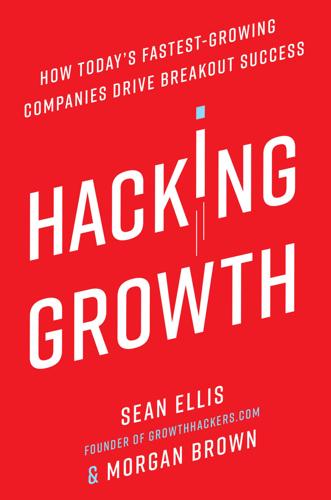
Hacking Growth: How Today's Fastest-Growing Companies Drive Breakout Success
by
Sean Ellis
and
Morgan Brown
Published 24 Apr 2017
The best way to do this is to craft what Johns dubbed a company’s fundamental growth equation. This is a simple formula that represents all of the key factors that will combine to drive your growth; in other words, your core set of growth levers. This equation is different for every product or business. Here’s an example for the company Morgan runs, Inman News, which is a subscription business: (WEBSITE TRAFFIC × EMAIL CONVERSION RATE × ACTIVE USER RATE × CONVERSION TO PAID SUBSCRIBER) + RETAINED SUBSCRIBERS + RESURRECTED SUBSCRIBERS = SUBSCRIBER REVENUE GROWTH For eBay the formula is: NUMBER OF SELLERS LISTING ITEMS × NUMBER OF LISTED ITEMS × NUMBER OF BUYERS × NUMBER OF SUCCESSFUL TRANSACTIONS = GROSS MERCHANDISE VOLUME GROWTH Johns even created this equation for Amazon to illustrate the value of these formulas:6 VERTICAL EXPANSION × PRODUCT INVENTORY PER VERTICAL × TRAFFIC PER PRODUCT PAGE × CONVERSION TO PURCHASE × AVERAGE PURCHASE VALUE × REPEAT PURCHASE BEHAVIOR = REVENUE GROWTH While all products will share common drivers of growth, such as new user acquisition, higher activation, and better retention, each product or business has a more specific combination of factors that are uniquely its own.
…
For example, users in Germany may be more likely to purchase using a specific set of payment options, which are different from the preferred payment method in Russia, resulting in markedly different monetization rates for each country. By the same token, certain business models may be better understood in one country compared to another. Subscription businesses are well understood in the United States, for example, but may be less well received in other countries. Growth teams can experiment with offering different sets of options to different countries to increase monetization within each.4 LEARNING WHO YOUR CUSTOMERS ARE As we’ve seen already, there are numerous ways to segment your customer base to find new insights.
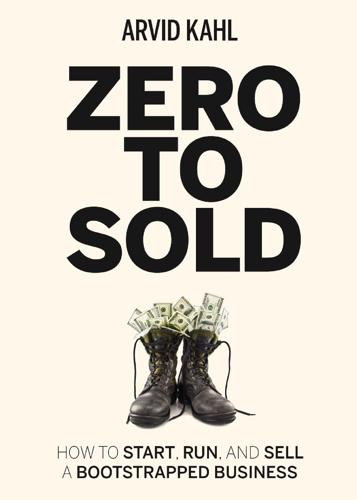
Zero to Sold: How to Start, Run, and Sell a Bootstrapped Business
by
Arvid Kahl
Published 24 Jun 2020
You will have reached that state when you create a subscription business with negative churn. In a subscription-based business, churn is the percentage of customers that discontinue their subscriptions month over month. Churn hurts your growth twice. For each churned customer, you need to find a new customer just to get back to a net-zero. To grow, you effectively need two new customers. Negative churn happens when the customers who stay with your business spend more time on upgrades than you lose from customers canceling. That is the holy grail of subscription businesses: when your churn is negative, you don't even need to add more customers to grow.
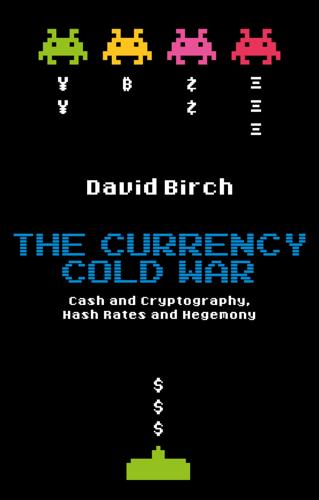
The Currency Cold War: Cash and Cryptography, Hash Rates and Hegemony
by
David G. W. Birch
Published 14 Apr 2020
(At which point they gave up, because they could not be bothered to find out what BarclayCoin was or install it.) In time, content providers developed attractive subscription-based models that consumers, at least during the first phase of internet evolution, found much easier to understand and navigate. I do not want to reopen the e-cash micropayment debate here, but, personally, I do feel the subscription-based business model might be peaking. I also agree with the noted venture capitalist Fred Wilson, who wrote in his review of the last decade that ‘a subscription overload backlash is emerging as many consumers have signed up for more subscriptions than they need and in some cases can afford’ (Wilson 2019).
…
My subscriptions to Netflix, Amazon Prime, Sky Sports and The Economist – my subscription to this and my subscription that – are starting to add up to a pretty penny. So, maybe it is time to revisit that e-cash micropayment model (once we get over Bitcoin’s usability issues and find ourselves with more user-friendly digital options, of course). The combination of technological limitations and the rise of subscription-based business models meant none of these first attempts to create something truly new went anywhere. The cryptographic solutions were too complex, the commercial solutions did not support person-to-person transfers (who remembers the Secure Electronic Transactions, or SET, standard?), and web browsers did not support encryption or authentication anyway (Green 2018).
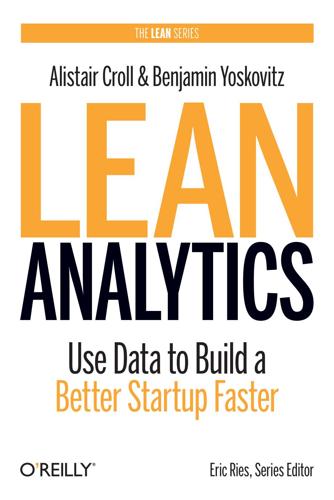
Lean Analytics: Use Data to Build a Better Startup Faster
by
Alistair Croll
and
Benjamin Yoskovitz
Published 1 Mar 2013
The pivot for Backupify was a success. The company is growing successfully. For now, it remains focused on MRR, but it also tracks how much a customer is worth in the entirety of his relationship with the company—the customer lifetime value (CLV). CLV and CAC are the two essential metrics for a subscription business. In Backupify’s case, the ratio of CLV to CAC is 5–6x, meaning that for every dollar the company invests in finding a customer, it makes back $5 to $6. This is excellent, and it’s partly due to its low churn. As it turns out, lock-in is high for cloud storage, which gives the company plenty of time to make back its acquisition costs in the form of revenues.
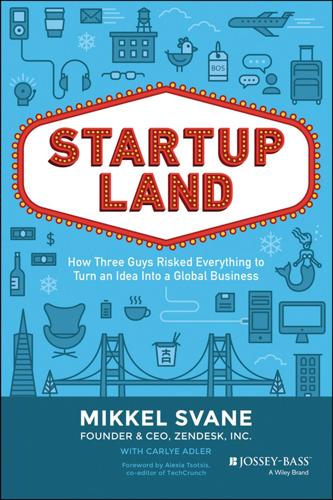
Startupland: How Three Guys Risked Everything to Turn an Idea Into a Global Business
by
Mikkel Svane
and
Carlye Adler
Published 13 Nov 2014
Of course, that’s not the case for all startups—there are definitely examples of companies that have come a long way on their own positive cash flow—but the general rule is that if you optimize for profitability, you sacrifice growth. And for a startup, it’s all about growth. Being a SaaS company, and therefore technically a subscription business, makes the need for cash even more urgent. A good small-business customer would pay us something like $500 a month. Considering the expansion and upgrade profile of our customer base and our churn rate, we can calculate the lifetime value of this customer as something around $50,000. That’s a significant amount and a good value customer, but the problem is that it will take us years—maybe many years—to see that total amount.
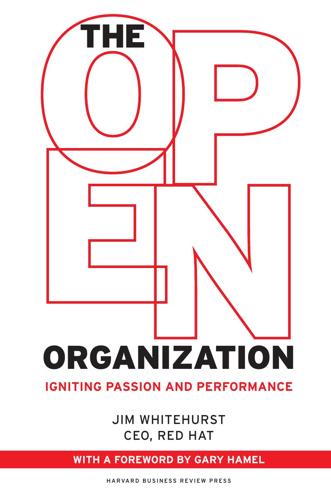
The Open Organization: Igniting Passion and Performance
by
Jim Whitehurst
Published 1 Jun 2015
Without a doubt, engineering and sales would jump in and begin working to better communicate our value proposition and improve usability, but my team and I realized that much of the work required to address unpaid usage of the product and renewals would come from other areas of the business. So the team worried that, without a bit more direction, a broad statement of “free to paid” would send some groups scurrying, while others would feel it was not relevant to their area. Renewals are a great example. Obviously, for a subscription business, renewals are a key value driver. Much of what drives renewals is hard-core operational work. Because our products are often sold preloaded on a manufacturer’s hardware or sold in less developed areas through multiple distribution levels, we often do not know who the end customer is. Improving renewals entails working on myriad operational and legal issues.
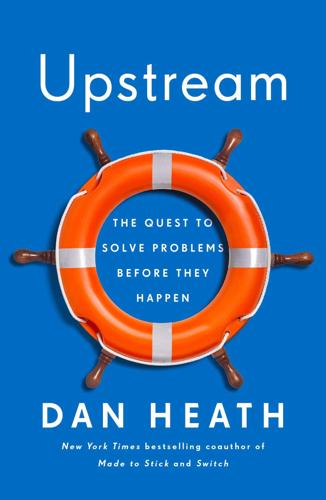
Upstream: The Quest to Solve Problems Before They Happen
by
Dan Heath
Published 3 Mar 2020
The recruiting product, offered on a subscription basis, was designed to help companies find and attract new hires. It was selling incredibly well, but the “churn” was high. The churn rate is the percentage of customers who don’t renew their subscriptions, and it’s a critical diagnostic of health for any subscription business, from Netflix to People magazine. When Saxena joined the company, the churn rate was roughly 30%, meaning that 3 out of 10 customers stopped using the recruiting product every year. The company’s traditional approach to managing churn was to assign people to work closely with customers—especially those feared to be at risk of leaving—around the time of renewal.
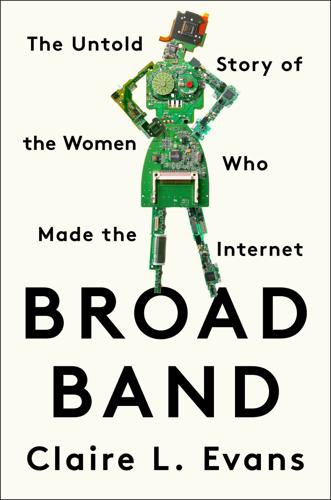
Broad Band: The Untold Story of the Women Who Made the Internet
by
Claire L. Evans
Published 6 Mar 2018
Having never worked in the magazine world, she had no idea what that meant. In fact, putting a magazine on the Web at all was a new proposition: Word would be among the first. To say there was no business model is an understatement. Word’s backers assumed that online publishing would be a subscription business: like traditional magazines, readers would subscribe, and because there’d be no printing or distribution costs, the profit margin would be huge. They’d be selling something ineffable, again and again, without ever running low on inventory—the dot-com era’s delusion of choice. Icon thought they’d make millions in a matter of months.
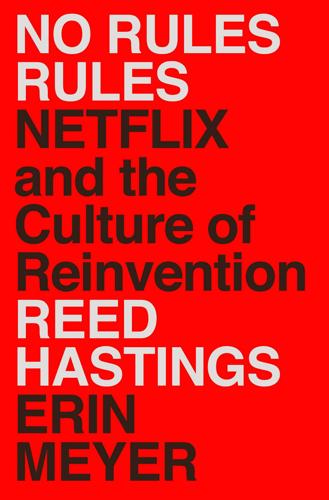
No Rules Rules: Netflix and the Culture of Reinvention
by
Reed Hastings
and
Erin Meyer
Published 7 Sep 2020
Then, within a few weeks, for a reason I couldn’t initially understand, the atmosphere improved dramatically. We were in cost-cutting mode, and we’d just let go of a third of the workforce, yet the office was suddenly buzzing with passion, energy, and ideas. A few months later the holidays arrived. DVD players were popular that Christmas, and by early 2002, our DVD-by-mail subscription business was growing rapidly again. Suddenly, we were doing far more work—with 30 percent fewer employees. To my amazement, those same eighty people were getting everything done with a passion that seemed higher than ever. They were working longer hours, but spirits were sky-high. It wasn’t just our employees who were happier.
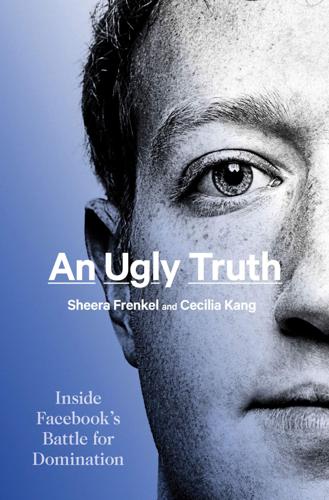
An Ugly Truth: Inside Facebook's Battle for Domination
by
Sheera Frenkel
and
Cecilia Kang
Published 12 Jul 2021
Zuckerberg set off on a one-month trip, with stops in Germany, Turkey, Japan, and India, where he spent time at an ashram that Jobs had suggested he visit. The trip was perfectly timed, affording Sandberg the opportunity to plot out the reinvention of the revenue-generating part of the company. “What business are we in?” she asked the leaders while scribbling furiously on a whiteboard. A subscription business or an advertising business? Did they want to make money by selling data through payments or through commerce? There wasn’t much deliberation. Of course Facebook would be free, the executives said, so their best path to make money was through ads. Sandberg nodded. To do this well, she continued, they would have to pinpoint what Facebook really had to offer.

Hit Makers: The Science of Popularity in an Age of Distraction
by
Derek Thompson
Published 7 Feb 2017
With thousands of titles flowing through the book rows of 1920s America, discovery became a fashionable problem, and new organizations rose to solve it. The Book of the Month Club, born in 1926, promised to handpick only the best works for its select members. The very next year it got competition in the book subscription business from the Literary Guild of America. Neither organization is praised as an innovator today, but their business model anticipated a century of selling bundled content. Paying a greatly discounted per-unit price to get more stuff than you can reasonably consume is cable TV, Spotify, Netflix, and the modern subscription box business.
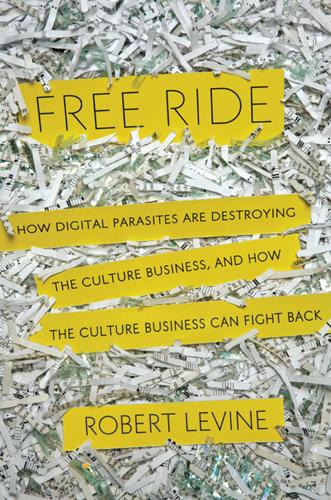
Free Ride
by
Robert Levine
Published 25 Oct 2011
Spotify announced that it would launch in the United States before the end of 2010—after planning and postponing a 2009 debut—but couldn’t arrange deals with the major labels in time. The company uses a “freemium” model: users in the U.K. can hear a limited amount of music with ads for nothing, pay £4.99 a month to eliminate the restrictions and commercials, or pay £9.99 to use it on a mobile device. The major labels like the company’s subscription business—it has been reported that they own shares in the company99—but they’re concerned that its free service is good enough that consumers won’t feel they need to pay for it. “Our perspective is that you really need to restrict free, so that it’s basically a customer acquisition vehicle and not a service alternative,” says a major-label executive who deals with digital services.

Brotopia: Breaking Up the Boys' Club of Silicon Valley
by
Emily Chang
Published 6 Feb 2018
These stories deserve our attention because they will have a lasting impact as a new generation of women struggles to climb the tech industry ladder. Wojcicki is the only one left at Google. As the CEO of YouTube, she’s grown revenues by billions of dollars (total YouTube revenues could surpass $12 billion in 2017, according to one third-party analyst) and launched a new TV subscription business to take on Netflix, streaming services, and cable companies. Forbes recently ranked her as the eighth most powerful woman in the world. Nevertheless, the media has never gushed over Susan Wojcicki, nor has it picked her apart. What it has done instead is virtually ignore her—an oversight that becomes more astonishing the more you look at her career.
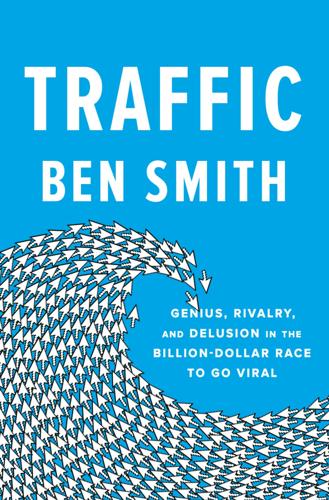
Traffic: Genius, Rivalry, and Delusion in the Billion-Dollar Race to Go Viral
by
Ben Smith
Published 2 May 2023
A new set of right-wing social networks, with names like Rumble and Gab, were channeling the energy that Tim Gionet tapped during the insurrection at the Capitol. Baked Alaska, indeed, was one of the first to join Donald Trump’s new network, Truth Social. Meanwhile, The New York Times and Washington Post were hoping a new surge of interest as Donald Trump reemerged into public life would revive subscription businesses that had flagged in his absence, as Democrats again turned to them to understand what they feared. But the Times was still awash in cash, and had taken in a handful of prominent internet media figures—Gawker’s Dodai Stewart and Choire Sicha, Vox’s Ezra Klein, Recode’s Kara Swisher, and me.

Exponential: How Accelerating Technology Is Leaving Us Behind and What to Do About It
by
Azeem Azhar
Published 6 Sep 2021
Ant Financial soon expanded to include five businesses: payments, wealth management, credit scoring, lending and insurance. It has persuaded 40 per cent of its customers to use all five products, and 80 per cent of its customers use three or more. This horizontal expansion is hardly unique to China. Apple, which started making computers, now makes phones, tablets and watches. It has a media subscription business and an App Store. Its products provide health information. And Amazon, a retailer, has moved from selling books to peddling virtually every type of tchotchke. It has a logistics wing, the world’s largest cloud computing business, and – like Apple – a media business. But nor does exponential logic lead solely to horizontal expansion into new markets.
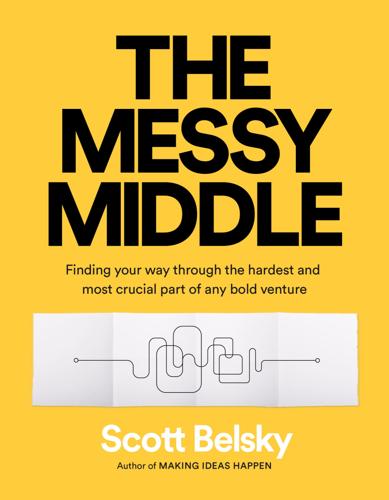
The Messy Middle: Finding Your Way Through the Hardest and Most Crucial Part of Any Bold Venture
by
Scott Belsky
Published 1 Oct 2018
Behance’s final mile began when our third round of discussions with Adobe about a potential partnership fell apart. There were so many reasons for Behance and Adobe to work together, but every time we got close to forming a partnership, Adobe felt they would be best building or running their own portfolio network rather than partnering with one. They were right to feel this way because, as a subscription business, Adobe needed to build relationships with the creative community. Online services like community and portfolio management were becoming a more central part of Creative Cloud, Adobe’s main business. They needed to build it themselves or acquire the best option out there. Several months later, I had the opportunity to meet David Wadhwani, who was Adobe’s senior vice president in charge of the company’s digital media business at the time.
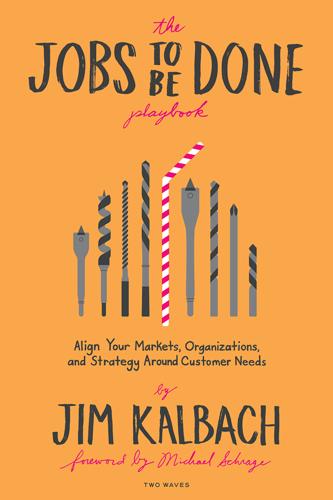
The Jobs to Be Done Playbook: Align Your Markets, Organization, and Strategy Around Customer Needs
by
Jim Kalbach
Published 6 Apr 2020
Reactively, you’ll need to provide support to customers. Your agents can better solve the underlying issues that customer have and address the job to be done directly. Markets are conversations. It’s no longer viable to sell customers products without developing a relationship with them, particularly in subscription-based business models. Recipe 5: Build a Corporate Innovation Strategy JTBD theory is based on the simple observation that people don’t purchase products, they hire them to get a job done. This powerful heuristic can inform your organization’s overarching strategy. Here’s how: 1. Conduct job interviews.
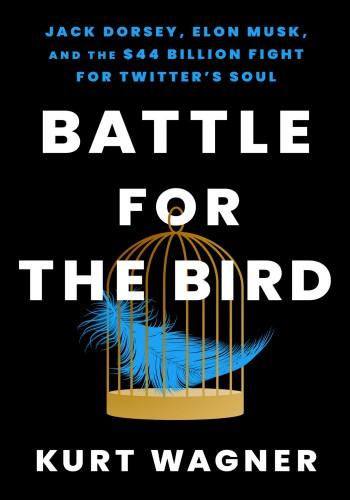
Battle for the Bird: Jack Dorsey, Elon Musk, and the $44 Billion Fight for Twitter's Soul
by
Kurt Wagner
Published 20 Feb 2024
Musk said in July 2023 that advertising revenue was down 50 percent. By September, U.S. ad revenue was down 60 percent. X was still cash-flow negative and had massive interest payments on the debt Musk took out to finance his deal. On top of that, his plan to diversify X’s revenue by building a major subscription business never materialized. It turns out very few people wanted to pay $8 per month for a blue checkmark. By the time Musk rebranded to X, the company was worth just $20 billion, or less than half the $44 billion he’d paid the previous fall. At least Musk had a sense of humor about it. “Say what you want about me, but I acquired the world’s largest non-profit for $44B lol,” he joked to his followers.
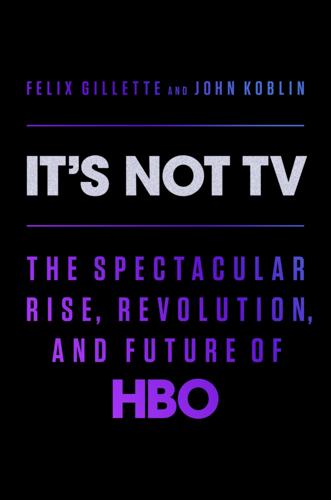
It's Not TV: The Spectacular Rise, Revolution, and Future of HBO
by
Felix Gillette
and
John Koblin
Published 1 Nov 2022
“We weren’t ready to do it. It was premature by a few years. There wasn’t any pathway. You’re either in or you’re out. We had four or five billion dollars’ worth of domestic revenues on the table. If you want to put that at risk you’d better be sure if you go over the top what it’s going to do to that subscription business. We weren’t really sure.” HBO was, in a sense, caught in a trap of its own success. Its position in cable was just too strong and too lucrative to jeopardize by chasing the technology of an uncertain future. “We were in a classic innovator’s dilemma,” says Shelley Brindle, then a top sales and marketing executive at HBO.

Makers at Work: Folks Reinventing the World One Object or Idea at a Time
by
Steven Osborn
Published 17 Sep 2013
Has growth been pretty consistent? Or have you seen a pretty large uptake recently with the whole maker movement? Kaplan: Yeah, what happened was there was an inflection point. We consistently grew—we were growing linearly every year, getting more customers, getting more subscribers, because with the subscription business, some percent renew every year, and then you keep adding more people. Then a bunch of things happened all at the same time. Kickstarter launched, transaction volume on Etsy broke $100M l sellers using Fulfillment by Amazon stowed more than one million unique items in their fulfillment centers.
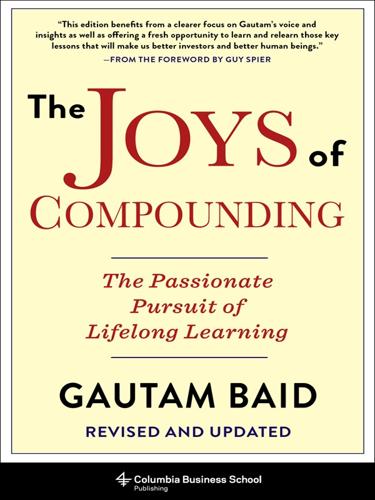
The Joys of Compounding: The Passionate Pursuit of Lifelong Learning, Revised and Updated
by
Gautam Baid
Published 1 Jun 2020
The businesses that buy commodities and sell brands and have strong pricing power (typically depicted by high gross margins) should always remember that possessing pricing power is like having access to a large amount of credit. You may have it in abundance, but you must use it sparingly. Having pricing power doesn’t mean you exercise it right away. Consumer surplus is a great strategy, especially for subscription-based business models in which management should primarily focus on habit formation and making renewals a no-brainer. Most businesses fail to appreciate this delicate trade-off between high short-term profitability and the longevity accorded to the business through disciplined pricing and offering great customer value.
…
Negative working capital means that customers are paying the company cash up front for goods or services that will be delivered at a later date. This is a powerful catalyst for a growing company, as the customers are essentially financing the company’s growth through prepayments. Best of all, the interest rate on this financing is zero percent, which is tough to beat. Negative working capital is common in subscription-based business models in which customers pay up front for recurring service or access. Because revenue is recognized when the service is performed, which is after the cash comes in, these businesses typically have operating cash flow that exceeds net income. Low fixed asset intensity can be analyzed by comparing annual sales to net property, plant and equipment, or capital expenditures.
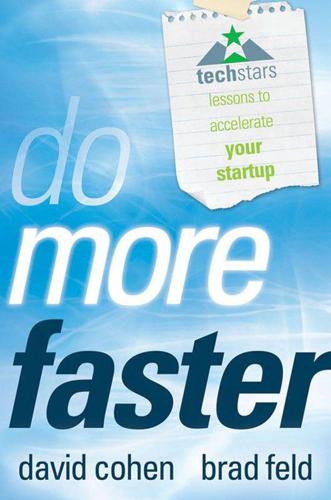
Do More Faster: TechStars Lessons to Accelerate Your Startup
by
Brad Feld
and
David Cohen
Published 18 Oct 2010
Do “just in time” legal work. During the course of the first year, you will want to have legal advice on corporate formation, founders’ equity, employment and consulting projects, stock options and other equity incentives, trademark and patent protection, trade secret and confidentiality issues, licensing, subscription or business model agreements, and financing strategy, including seed capital. Don't try to do everything at once. Ask your lawyer what needs to be done now, and ask how to extend your budget over time. Don't start drafting documents before you get to resolution with your co-founders on equity splits, vesting arrangements, and basic governance concerns.
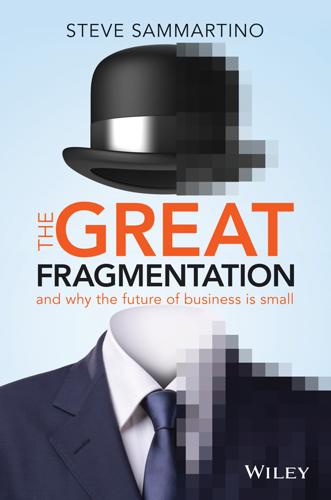
The Great Fragmentation: And Why the Future of All Business Is Small
by
Steve Sammartino
Published 25 Jun 2014
Controlling high-quality production assets is no longer a media strategy when everyone owns them. The difference between self-publishing and publishing is moving towards unnoticeable. Subscription television is doomed Business models that are no longer working manage to hang around for a long time. Just because a business model isn’t dead, doesn’t mean it hasn’t got terminal cancer. Subscription television is one such business model. We’re in the middle of a disruptive change to television. The cable television business model that emerged from the US in the late 1970s is no longer relevant. While it still exists, its days are numbered.
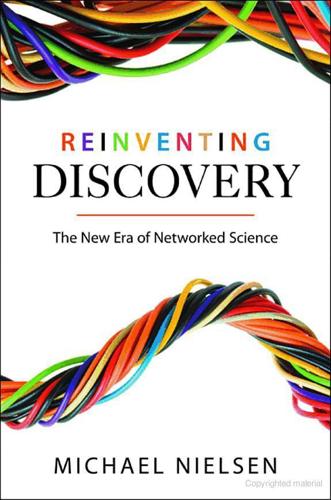
Reinventing Discovery: The New Era of Networked Science
by
Michael Nielsen
Published 2 Oct 2011
Journals may not have flashy covers and advertising, nor will you find most of them on display at your local newsstand, but both journals and magazines make much of their money by charging readers. An annual journal subscription might run to hundreds or thousands or even tens of thousands of dollars. And, as we’ve just seen, journals supplement those fees by charging for one-off access to articles on the web, typically $10 to $50. This subscription-based business model has been used by scientific publishers for hundreds of years. It’s a model that has served both science and society well. But the internet makes it possible to move to a new model of open access to scientific papers, where those papers may be freely downloaded. This is part of the shift we saw in the last chapter, with all the world’s scientific knowledge gradually becoming accessible online.
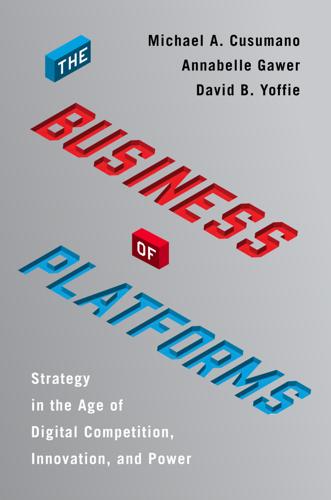
The Business of Platforms: Strategy in the Age of Digital Competition, Innovation, and Power
by
Michael A. Cusumano
,
Annabelle Gawer
and
David B. Yoffie
Published 6 May 2019
In the words of one executive, “Maybe five or six years from now, we’ll begin to see companies more willing to share data that could unlock new levels of collaboration,” perhaps by sharing anonymized data.72 To allay privacy concerns, GE enabled users to retain ownership of all their data processed on Predix, while GE would own the algorithms.73 Monetization—Subscription and Hybrid Business Models: Finally, to build a successful platform, GE needed a monetization strategy. Building Predix was costly: In 2015 alone, GE spent half a billion dollars. GE planned to monetize Predix using a subscription-based model, with either metered payments or predefined bundles for enterprise customers.
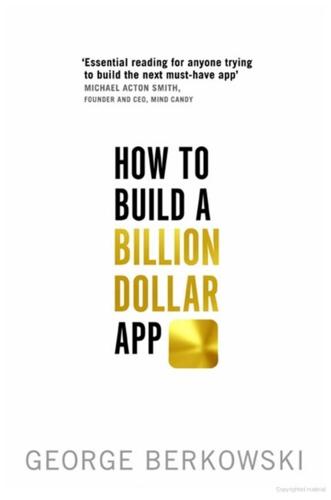
How to Build a Billion Dollar App: Discover the Secrets of the Most Successful Entrepreneurs of Our Time
by
George Berkowski
Published 3 Sep 2014
The companies referenced below – all of which are mobile-first, or have a massive app channel – are valued above $1 billion, and some a lot more. 1. GAMING. The Apple App Store and Google Play have been responsible for the growth and revenue-generating capabilities of a lot of apps. From pay-per-download to in-app payment and subscriptions, I am counting these as a grouping of business models that work great, especially for gaming apps, and anything virtual that can absorb the 30 per cent commission charged by Apple and Google. Angry Birds, Clash of Clans and Candy Crush Saga are all in this category. 2. E-COMMERCE/MARKETPLACE. I am lumping e-commerce and marketplace together for simplicity.
…
These players either develop their own advertising platforms (Flipboard), or seek to be acquired and monetise off the acquirers’ already well-established platform (as Instagram did with Facebook). 4. SOFTWARE AS A SERVICE (SAAS). This is where consumers pay for cloud-based software or services. WhatsApp is the first ‘mobile-first’ company with this model, charging some users $0.99 per year as a subscription via app-store payments, though its business model has evolved a number of times. A number of companies – which are not mobile first, but still have heavily used apps, such as Evernote (a note-taking app), Dropbox and Box (two document storage apps) – have this business model, whereby they charge subscriptions either via app-store payment channels, or bill you directly via your credit card. 5.

How to Fix the Future: Staying Human in the Digital Age
by
Andrew Keen
Published 1 Mar 2018
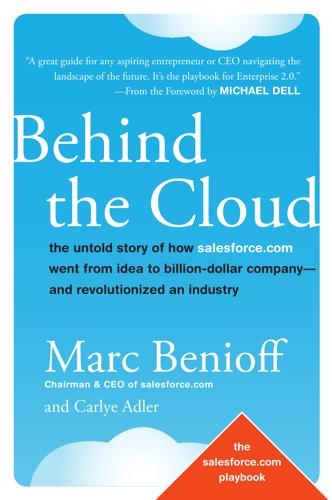
Behind the cloud: the untold story of how Salesforce.com went from idea to billion-dollar company--and revolutionized an industry
by
Marc Benioff
and
Carlye Adler
Published 19 Nov 2009
See SaaS Sohl, Jeffrey, 206–207 Southwest Airlines, 258 Speed, 106–107 Stakeholders’ success, 255–260 Stanford University, 157 Starbucks, 120, 129, 203 Start-up companies: adopting formalities after IPO, 220–223; believe in yourself, 5–6; building recruiting culture, 15, 16, 17, 19, 233–239; career development in, 250–252; choosing international partners, 179–182; creating image with events, 54; defining values and culture, 11–12; defying convention, 14; demonstrating commitment, 198–199; developing vision for, 3–4, 178–179, 195–196; differentiating, 28–31; disruptive business models of, 255, 259; ensuring stakeholders’ success, 255–260; establishing product relevance, 60, 63–64; estimating financing needed, 201–203; evolving to public corporation, 218–220; expanding without overspending, 176–177; financial team for, 209–210; focusing work, 12–13; fundraising strategies for, 203–205; getting good advice, 7–8; global strategies for products, 174–175; having mentors, 14–15; hiring best players, 15–17; injecting local leaders with corporate spirit, 170–172; integrating philanthropic model in, 139–140; listening to customers, 13–14, 85–86; long-term revenue planning, 223; philanthropic foundation in business model, 140–144; planning global growth, 172–173; preparing and filing IPO, 210–215; pursuing top talent, 7–9, 15–17; recharge time when developing, 277 INDEX 1–3; reducing costs of, 206–207; responding to criticism, 9–11; revenue vs. profitability in, 208–209; sequential growth strategies for, 177–178; starting satellite offices, 193–196; staying scrappy, 65–66; taking risks, 18–20; thinking bigger, 20–21; venture capital and, 205 Steele, Jim, 89 Story: developing for reporters, 40–41 Street Team concept, 49–52 Subscriptions: advantages of, 10, 90; business model based on, 76; converting to contract model, 82–85, 207–208; donating to nonprofits, 156–158, 166; free trial, 67–68, 96; licensing vs., 6; revenue challenges with, 218–220 Success: End of Software mission, 256; ensuring stakeholders’, 255–260; evaluating sales strategies, 96–97; measuring employee, 251; metrics monitoring corporate, 101; planning successful events, 55–56; projecting for product launch, 175–176; sharing financial, 217–218; supporting customers’, 97–100 Sugal, Cheri, 157 SunBridge, 181–182 SunGard, 89–91, 94 Susan G.

Applied Artificial Intelligence: A Handbook for Business Leaders
by
Mariya Yao
,
Adelyn Zhou
and
Marlene Jia
Published 1 Jun 2018

The Hacker and the State: Cyber Attacks and the New Normal of Geopolitics
by
Ben Buchanan
Published 25 Feb 2020
One of these files showed the list of network administrator accounts at various overseas financial institutions compromised by the NSA, which journalists quickly confirmed as belonging to real employees.38 In May, the Shadow Brokers continued to taunt the NSA. At the same time, they offered more justifications for their behavior, claiming to be responsible entrepreneurs and nothing more. More significantly, they announced yet another change in their approach to making money: they would move to a subscription service. Their new business model, as they put it, was “being like wine of month club. Each month peoples can be paying membership fee, then getting members only data dump each month.” Instead of wine, the members of this proposed club would receive newer and more powerful NSA exploits, as well as information about the NSA’s hacking operations against banking systems and against the nuclear programs of Russia, China, Iran, and North Korea.
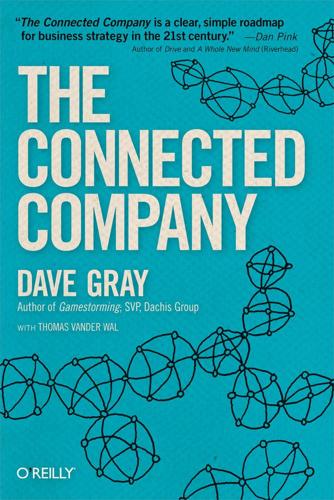
The Connected Company
by
Dave Gray
and
Thomas Vander Wal
Published 2 Dec 2014
For example, when Amazon opened an online store, it changed the operating environment for other retailers: as customers shifted their behavior, becoming more familiar and comfortable with online purchases, many brick-and-mortar retailers found themselves operating a high-cost Amazon showroom, as customers came into their stores to check out products and then ordered them online at a lower cost. When Netflix offered DVDs as a mail-based subscription service, it changed the business model for movie watching. Instead of renting films one at a time, customers could pay a flat fee and keep movies as long as they wanted. When Redbox partnered with Walgreens, McDonald’s, and other commonly visited locations such as grocery stores to place video game and DVD rental kiosks inside and outside stores, they further shifted the competitive environment.
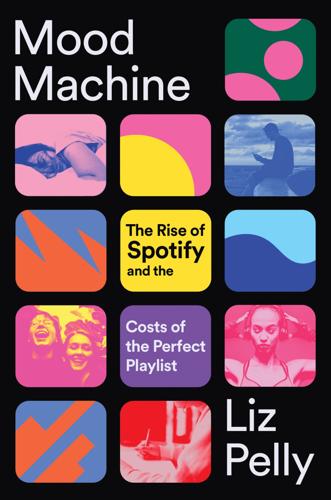
Mood Machine: The Rise of Spotify and the Costs of the Perfect Playlist
by
Liz Pelly
Published 7 Jan 2025
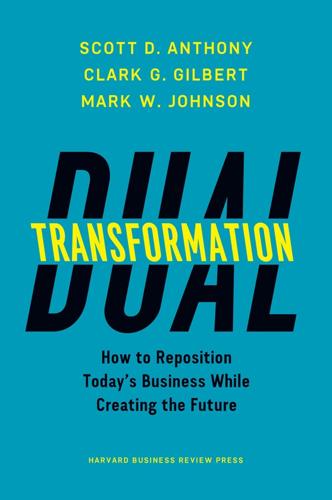
Dual Transformation: How to Reposition Today's Business While Creating the Future
by
Scott D. Anthony
and
Mark W. Johnson
Published 27 Mar 2017
The recession, which led many of Adobe’s corporate customers to push for more “asset-light” solutions, led Adobe leadership to assess making a bold shift from selling software to offering subscriptions to its leading products. As then CFO Mark Garrett put it, “A recession is a terrible thing to waste.” So in 2008 Adobe launched Photoshop Express as a way to test a subscription-based SaaS offering. Although the business model was jarring to a company based on selling packaged software, it had advantages. Recurring monthly revenue provides greater predictability compared with a boom-and-bust “blockbuster” model, in which sales spike after release of a new package and dwindle as the package saturates the market.
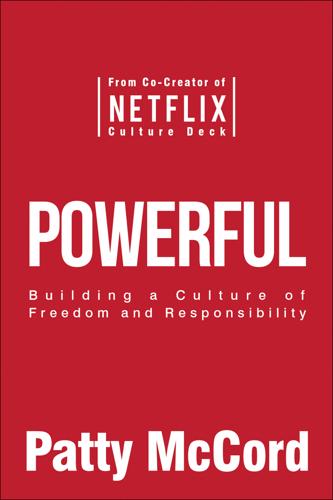
Powerful: Teams, Leaders and the Culture of Freedom and Responsibility
by
Patty McCord
Published 9 Jan 2018
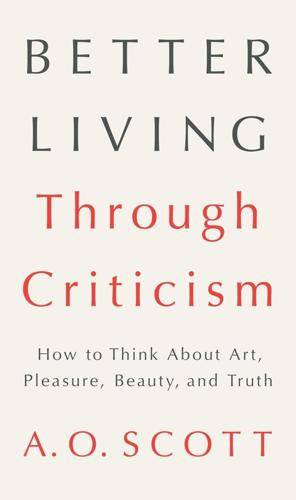
Better Living Through Criticism: How to Think About Art, Pleasure, Beauty, and Truth
by
A. O. Scott
Published 9 Feb 2016
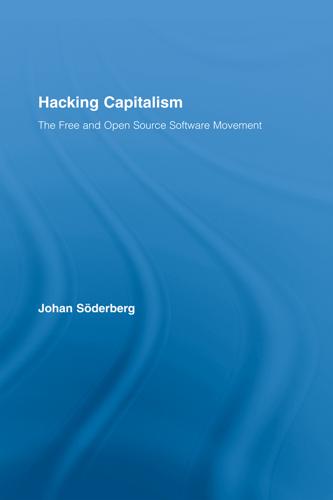
Hacking Capitalism
by
Söderberg, Johan; Söderberg, Johan;
Software code is developed and made obsolete at such speeds that the product form of computer applications, i.e. boxes wrapped up and marketed in yearly releases, is dissolving into a continuous process where the application is upgraded every two weeks. Point-of-sale is replaced with subscription services as the favoured business model. The experimentation with novel ways of doing business in the computer sector shows that the reasoning of Tessa Morris-Suzuki, that surplus value is exploited in the stage of innovation instead of manufacturing, has profound consequences for Marxist theory. Her thought can be stretched yet a bit further.
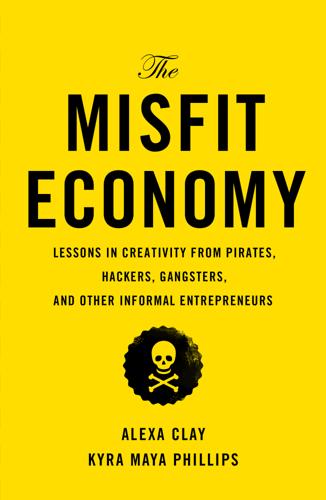
The Misfit Economy: Lessons in Creativity From Pirates, Hackers, Gangsters and Other Informal Entrepreneurs
by
Alexa Clay
and
Kyra Maya Phillips
Published 23 Jun 2015

5 Day Weekend: Freedom to Make Your Life and Work Rich With Purpose
by
Nik Halik
and
Garrett B. Gunderson
Published 5 Mar 2018
Not only do you need to know how to create something for which there is legitimate market demand and that will really sell, but you also have to know how to market it. You have to learn the various ways to drive traffic, from search engine optimization and pay-per-click advertising, to paid links and affiliates. Revenue Subscriptions A recurring revenue subscription is the holy grail of all business models and is indeed one of my favorites. I have several subscription memberships for people investing in the financial markets. If you can sell something on a recurring revenue subscription, it gives you predictable cash flow because your customers are billed on a regular basis.
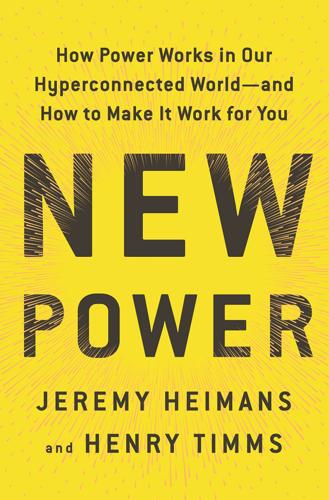
New Power: How Power Works in Our Hyperconnected World--And How to Make It Work for You
by
Jeremy Heimans
and
Henry Timms
Published 2 Apr 2018

Hit Refresh: The Quest to Rediscover Microsoft's Soul and Imagine a Better Future for Everyone
by
Satya Nadella
,
Greg Shaw
and
Jill Tracie Nichols
Published 25 Sep 2017
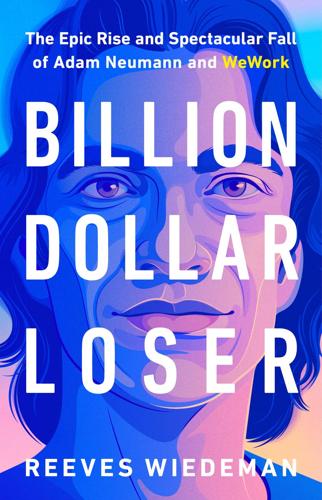
Billion Dollar Loser: The Epic Rise and Spectacular Fall of Adam Neumann and WeWork
by
Reeves Wiedeman
Published 19 Oct 2020

The Internet Is Not the Answer
by
Andrew Keen
Published 5 Jan 2015
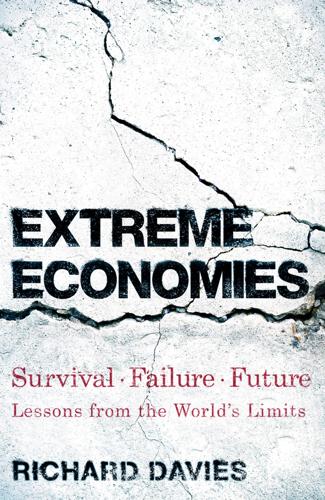
Extreme Economies: Survival, Failure, Future – Lessons From the World’s Limits
by
Richard Davies
Published 4 Sep 2019

Lifestyle Entrepreneur: Live Your Dreams, Ignite Your Passions and Run Your Business From Anywhere in the World
by
Jesse Krieger
Published 2 Jun 2014
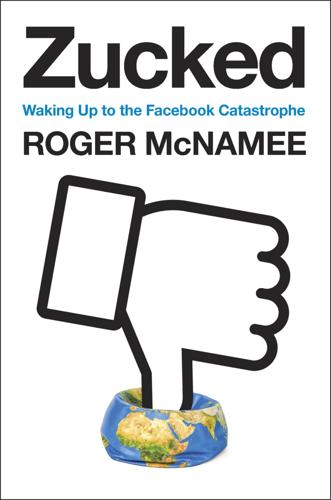
Zucked: Waking Up to the Facebook Catastrophe
by
Roger McNamee
Published 1 Jan 2019
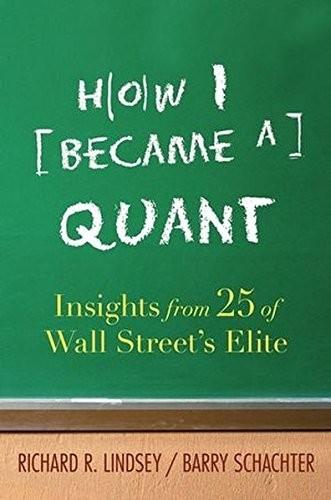
How I Became a Quant: Insights From 25 of Wall Street's Elite
by
Richard R. Lindsey
and
Barry Schachter
Published 30 Jun 2007
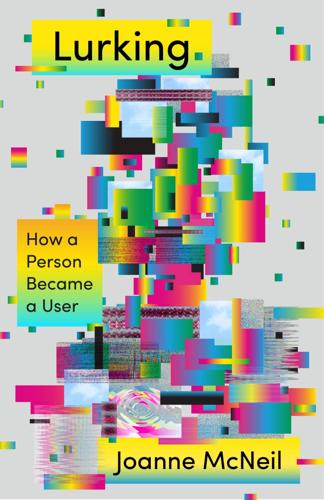
Lurking: How a Person Became a User
by
Joanne McNeil
Published 25 Feb 2020

Buy Then Build: How Acquisition Entrepreneurs Outsmart the Startup Game
by
Walker Deibel
Published 19 Oct 2018
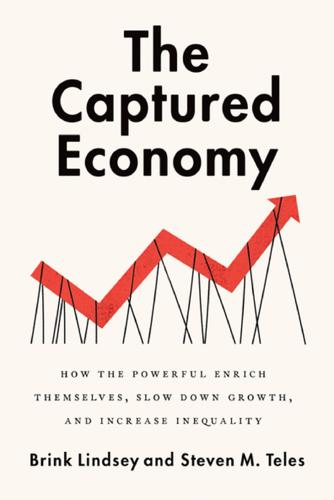
The Captured Economy: How the Powerful Enrich Themselves, Slow Down Growth, and Increase Inequality
by
Brink Lindsey
Published 12 Oct 2017
Although mass digitization holds out the possibility of making virtually everything ever published accessible with a few keystrokes, millions of works continue to languish in limbo simply because of uncertainty over who owns the rights to them. Meanwhile, access to the vast storehouses of scientific research is bottled up by copyright. A small group of academic publishers, most prominently, Elsevier, Springer, and Wiley, rake in profit margins in excess of 35 percent as subscription prices for university libraries race well ahead of inflation. “Their business model [i]s a marvel,” writes copyright historian Peter Baldwin: “Sell scholarship back to the same universities whose scientists had produced, written, peer reviewed, and edited it largely for free.”19 An enterprising neuroscience researcher in Kazakhstan created the website Sci-Hub to breach the academic publishing paywalls for some 47 million journal articles.
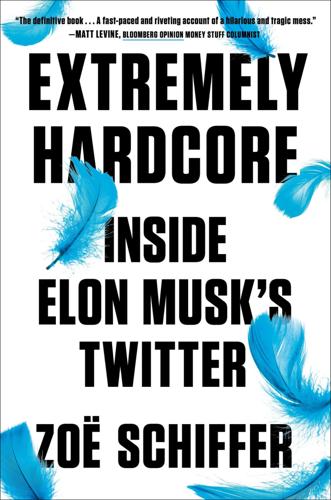
Extremely Hardcore: Inside Elon Musk's Twitter
by
Zoë Schiffer
Published 13 Feb 2024
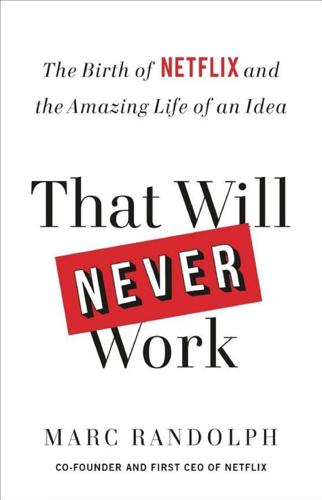
That Will Never Work: The Birth of Netflix and the Amazing Life of an Idea
by
Marc Randolph
Published 16 Sep 2019
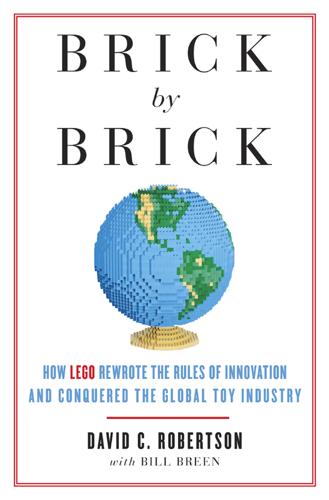
Brick by Brick: How LEGO Rewrote the Rules of Innovation and Conquered the Global Toy Industry
by
David Robertson
and
Bill Breen
Published 24 Jun 2013

No Ordinary Disruption: The Four Global Forces Breaking All the Trends
by
Richard Dobbs
and
James Manyika
Published 12 May 2015
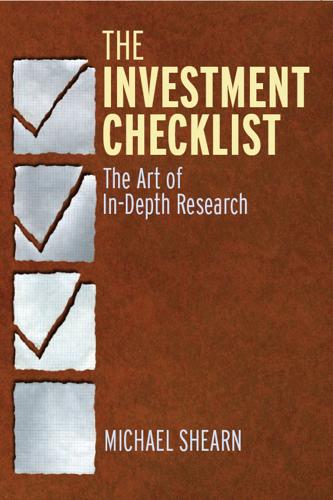
The Investment Checklist: The Art of In-Depth Research
by
Michael Shearn
Published 8 Nov 2011

Rentier Capitalism: Who Owns the Economy, and Who Pays for It?
by
Brett Christophers
Published 17 Nov 2020

The Measure of Progress: Counting What Really Matters
by
Diane Coyle
Published 15 Apr 2025

The Millionaire Fastlane: Crack the Code to Wealth and Live Rich for a Lifetime
by
Mj Demarco
Published 8 Nov 2010

The Wealth of Networks: How Social Production Transforms Markets and Freedom
by
Yochai Benkler
Published 14 May 2006

Thank You for Being Late: An Optimist's Guide to Thriving in the Age of Accelerations
by
Thomas L. Friedman
Published 22 Nov 2016

Power and Progress: Our Thousand-Year Struggle Over Technology and Prosperity
by
Daron Acemoglu
and
Simon Johnson
Published 15 May 2023
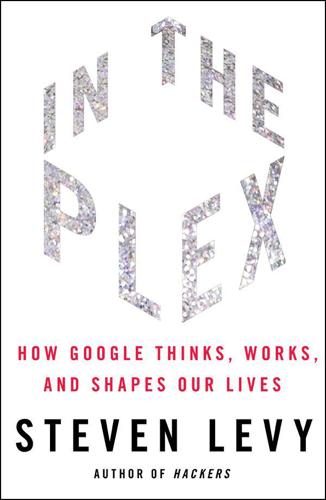
In the Plex: How Google Thinks, Works, and Shapes Our Lives
by
Steven Levy
Published 12 Apr 2011

Future Crimes: Everything Is Connected, Everyone Is Vulnerable and What We Can Do About It
by
Marc Goodman
Published 24 Feb 2015

MONEY Master the Game: 7 Simple Steps to Financial Freedom
by
Tony Robbins
Published 18 Nov 2014